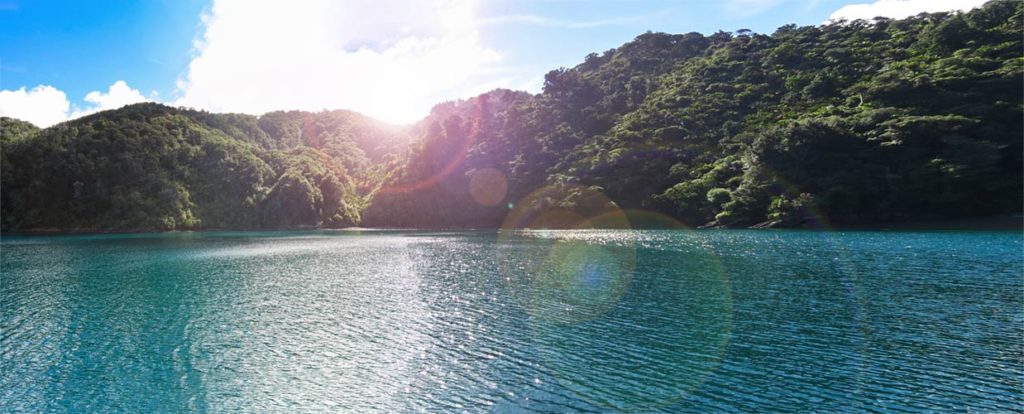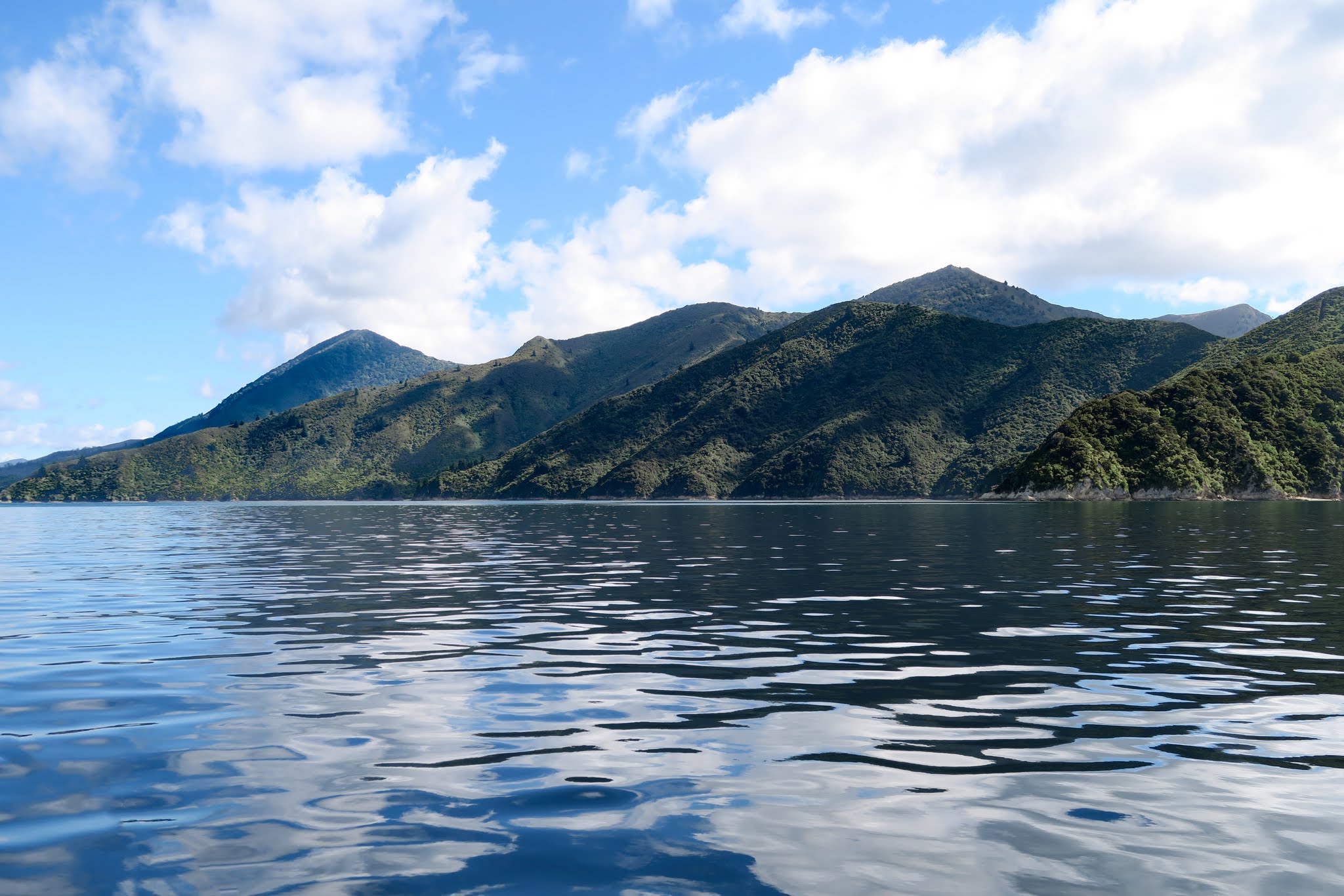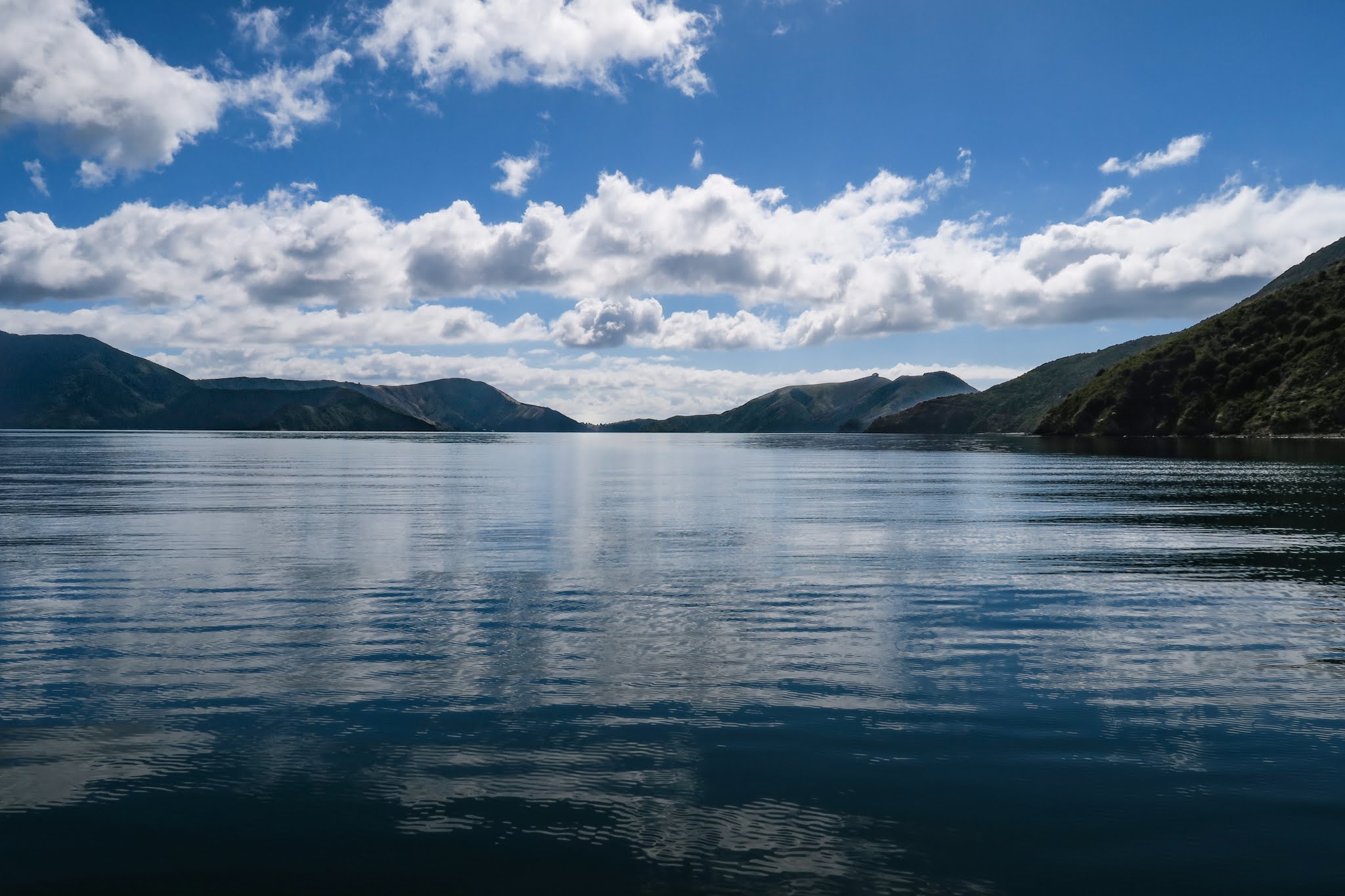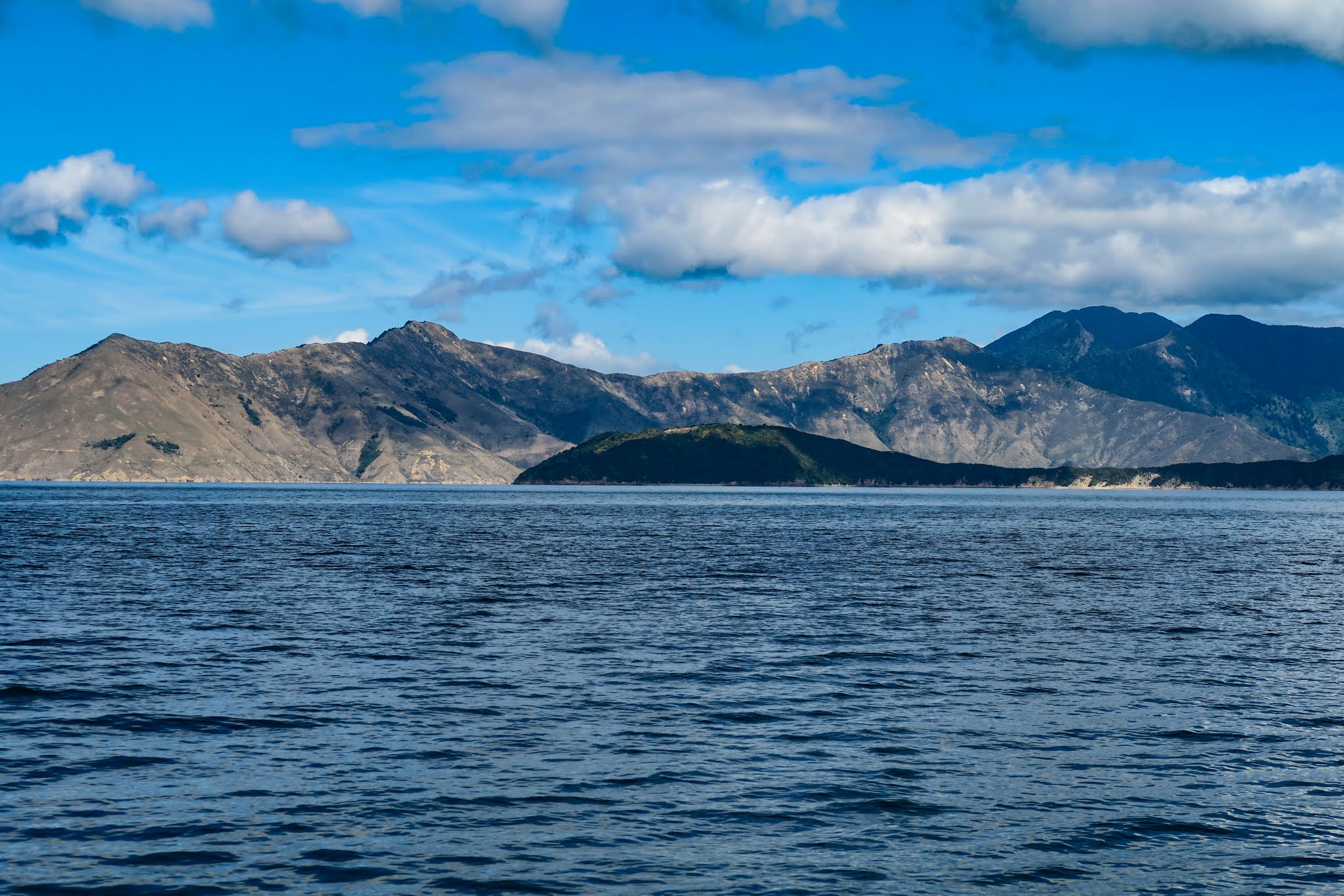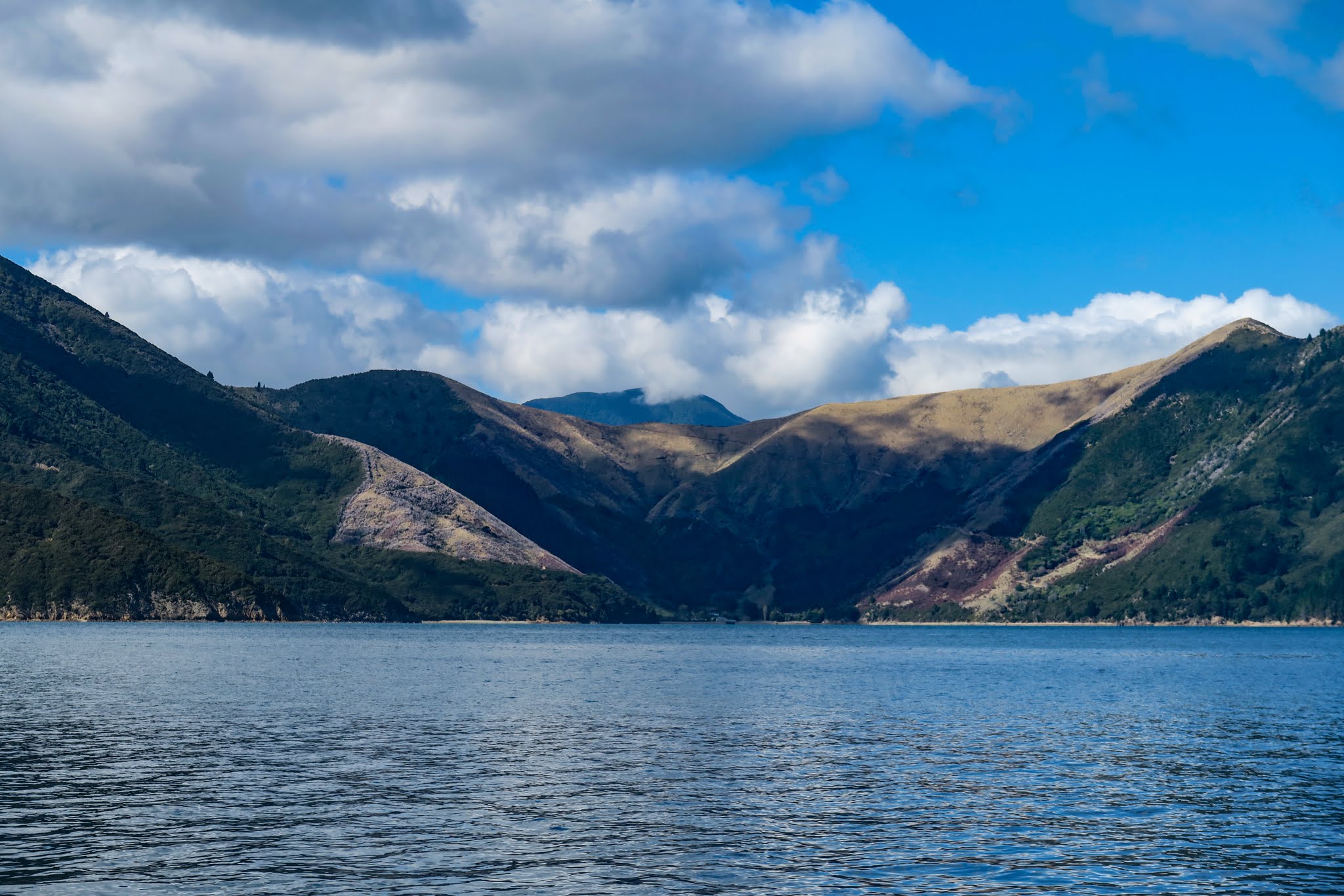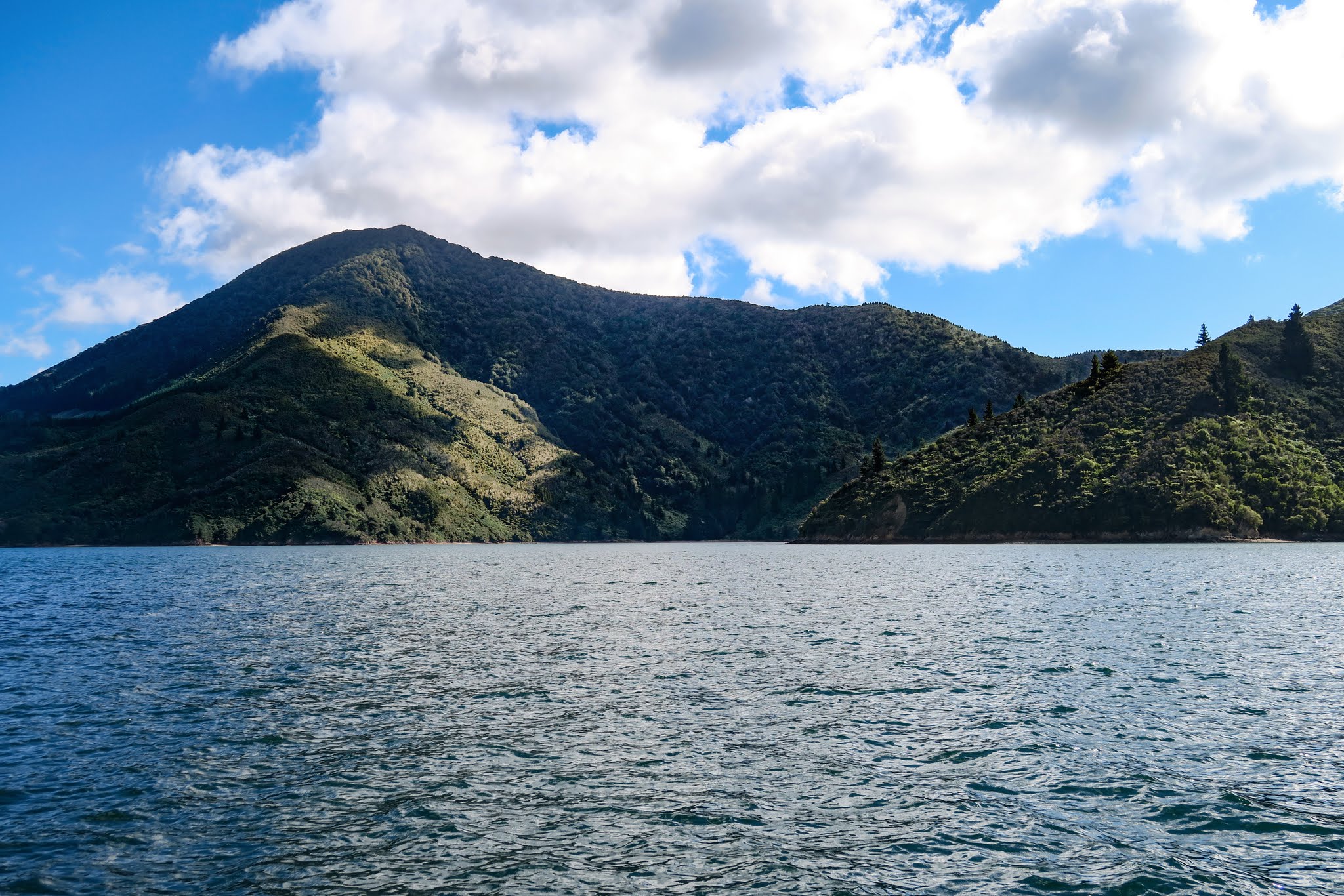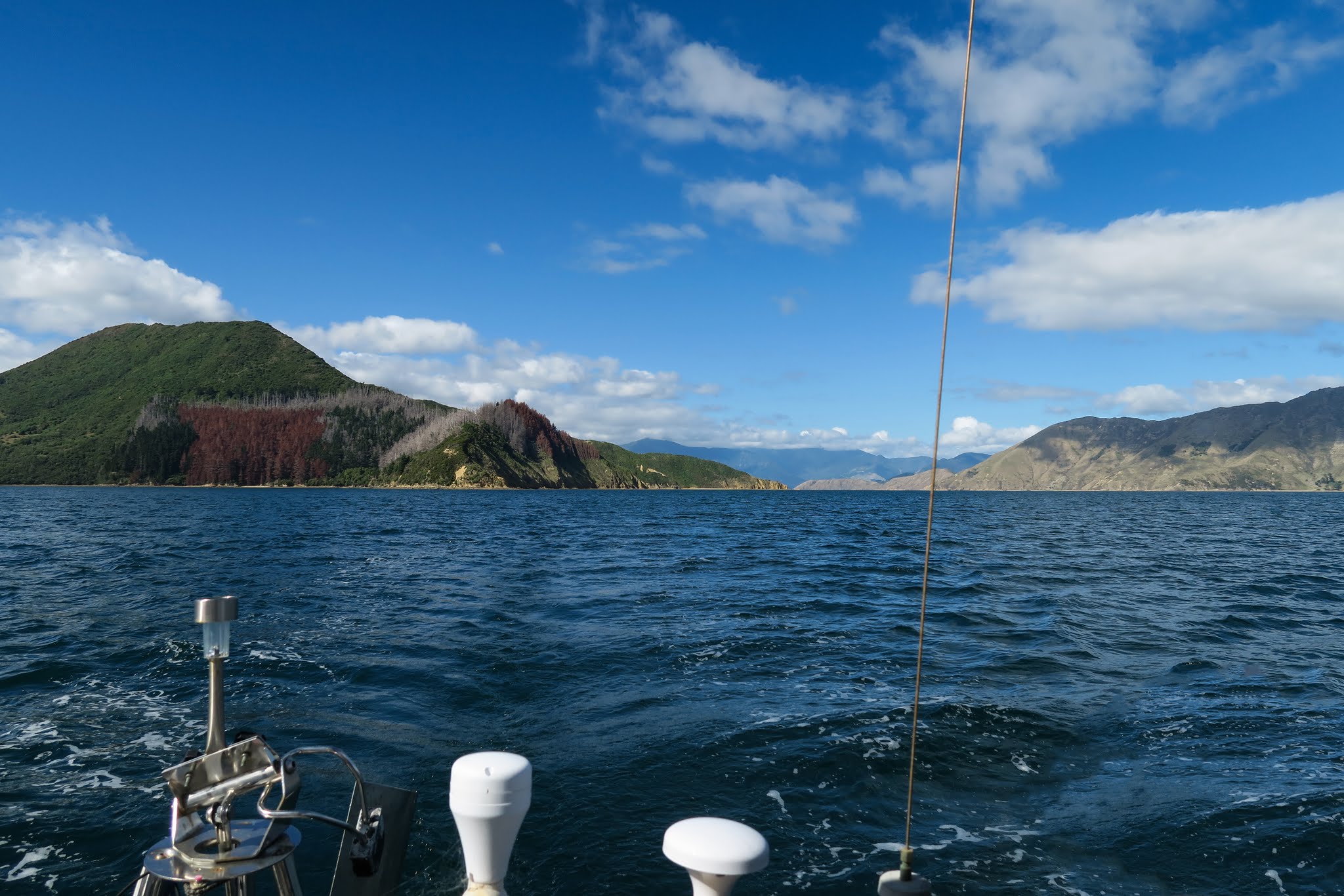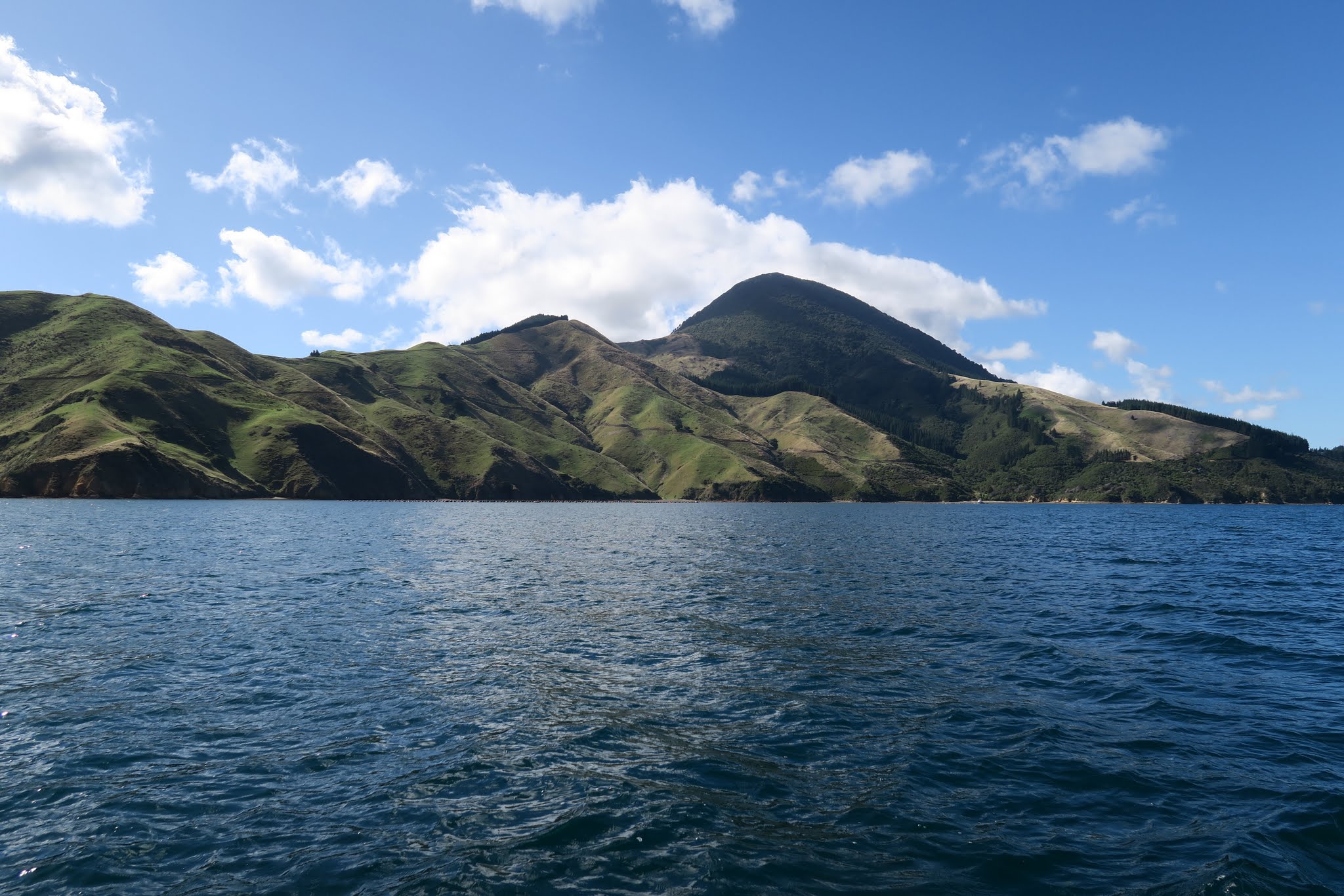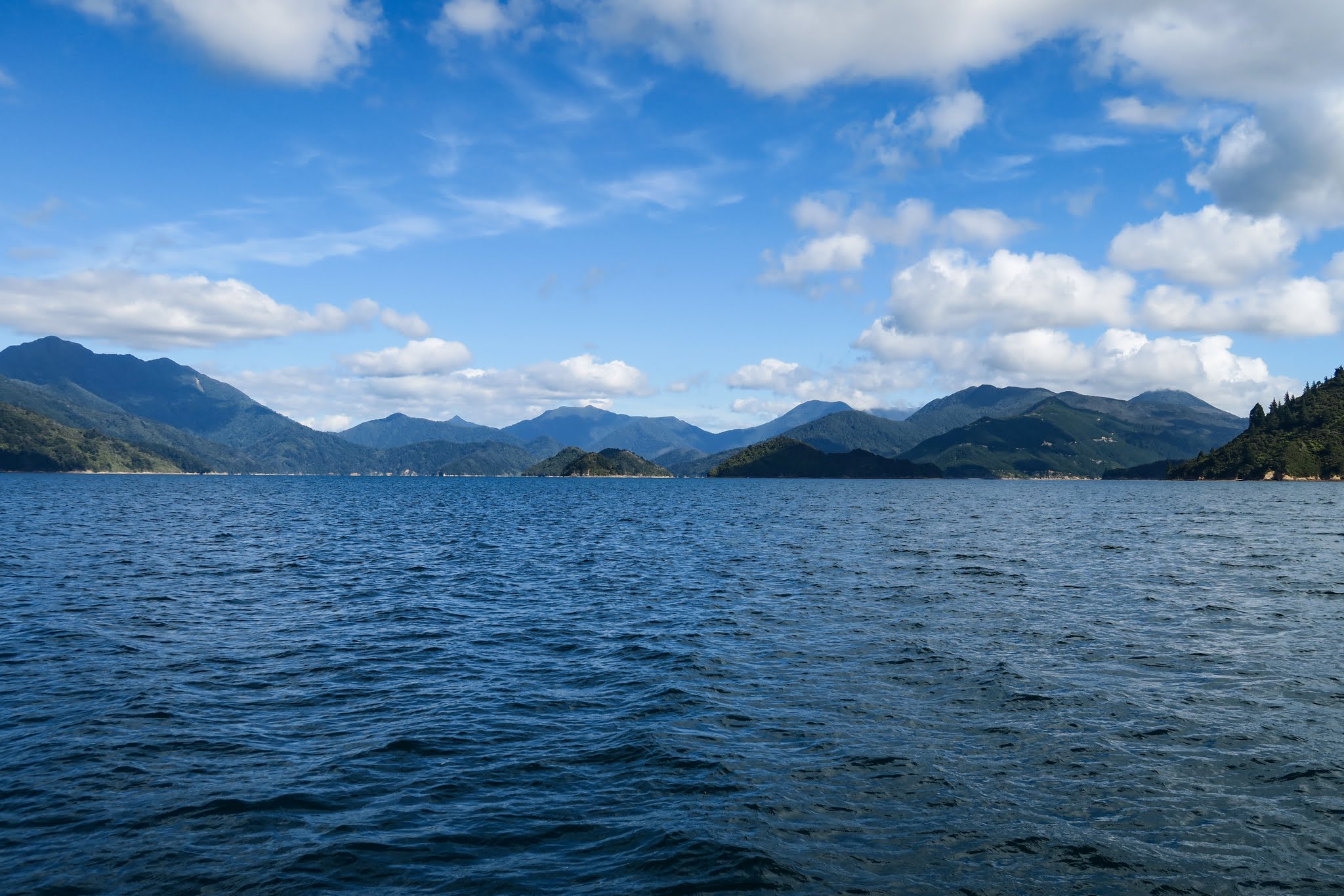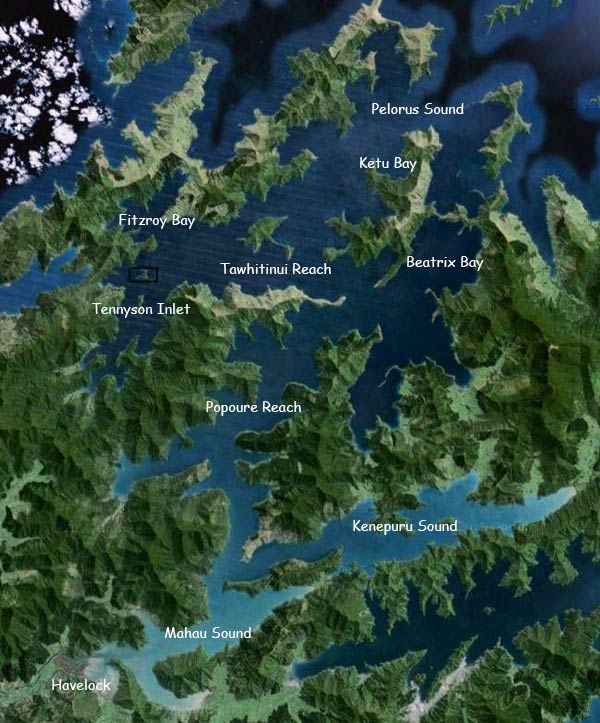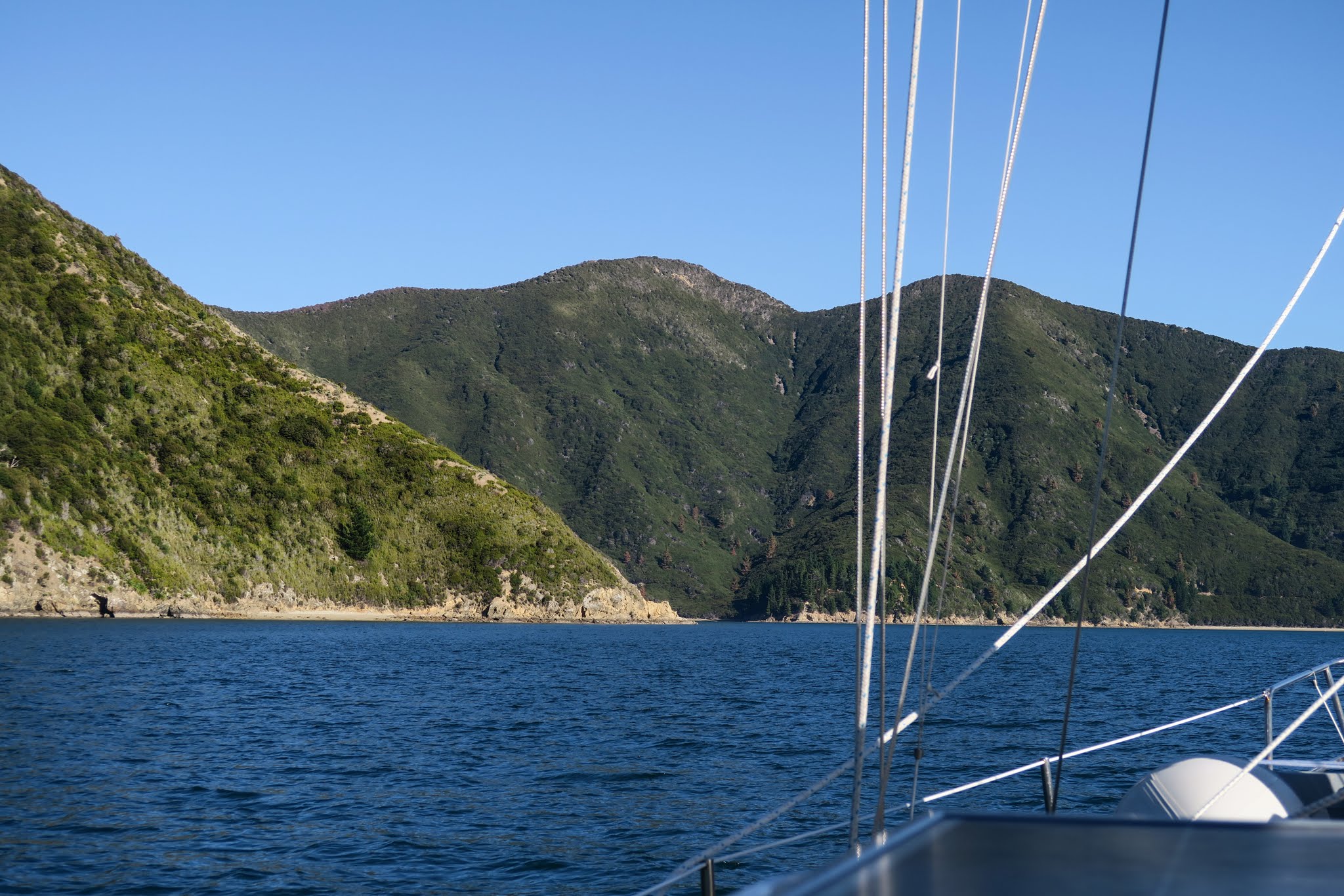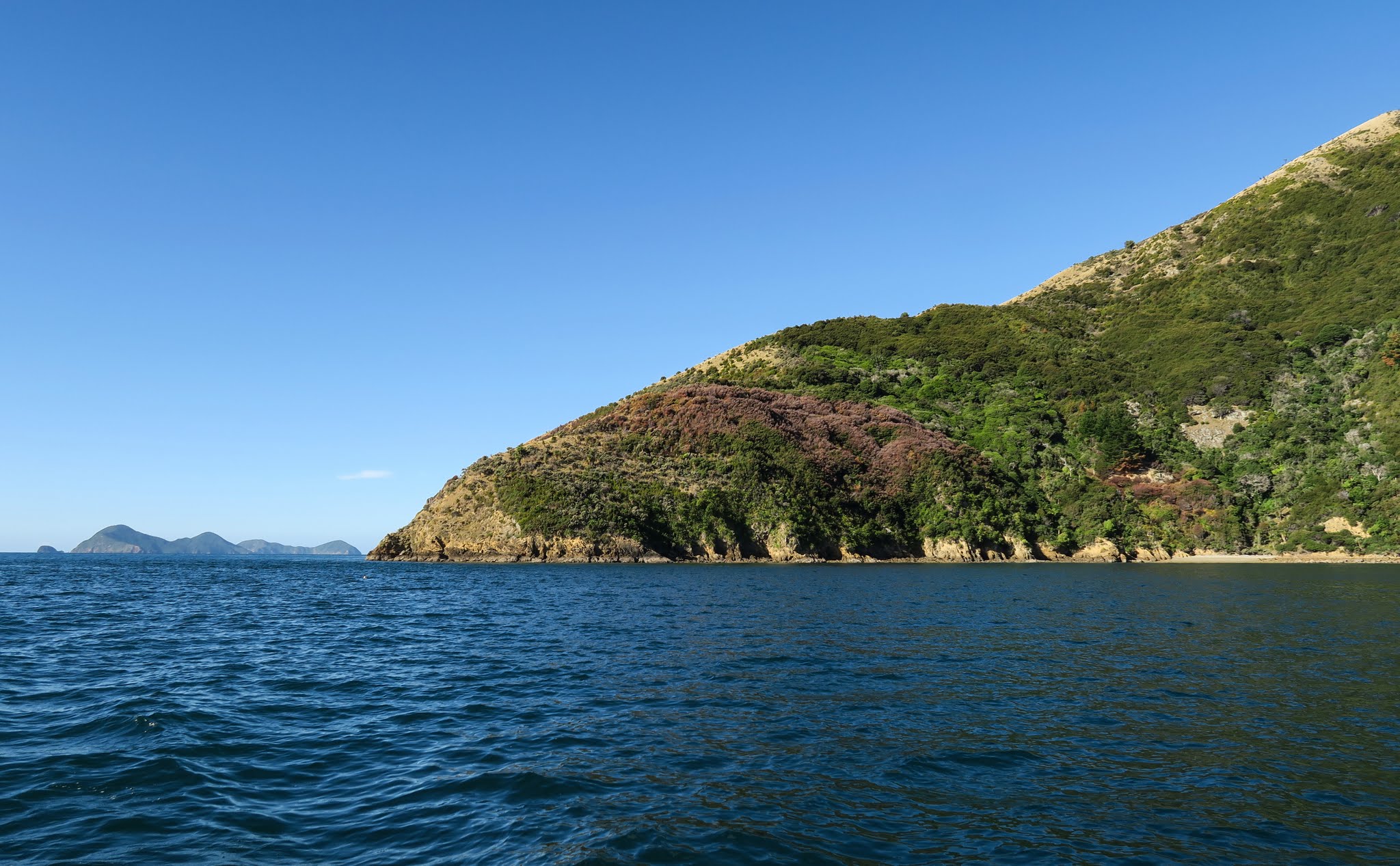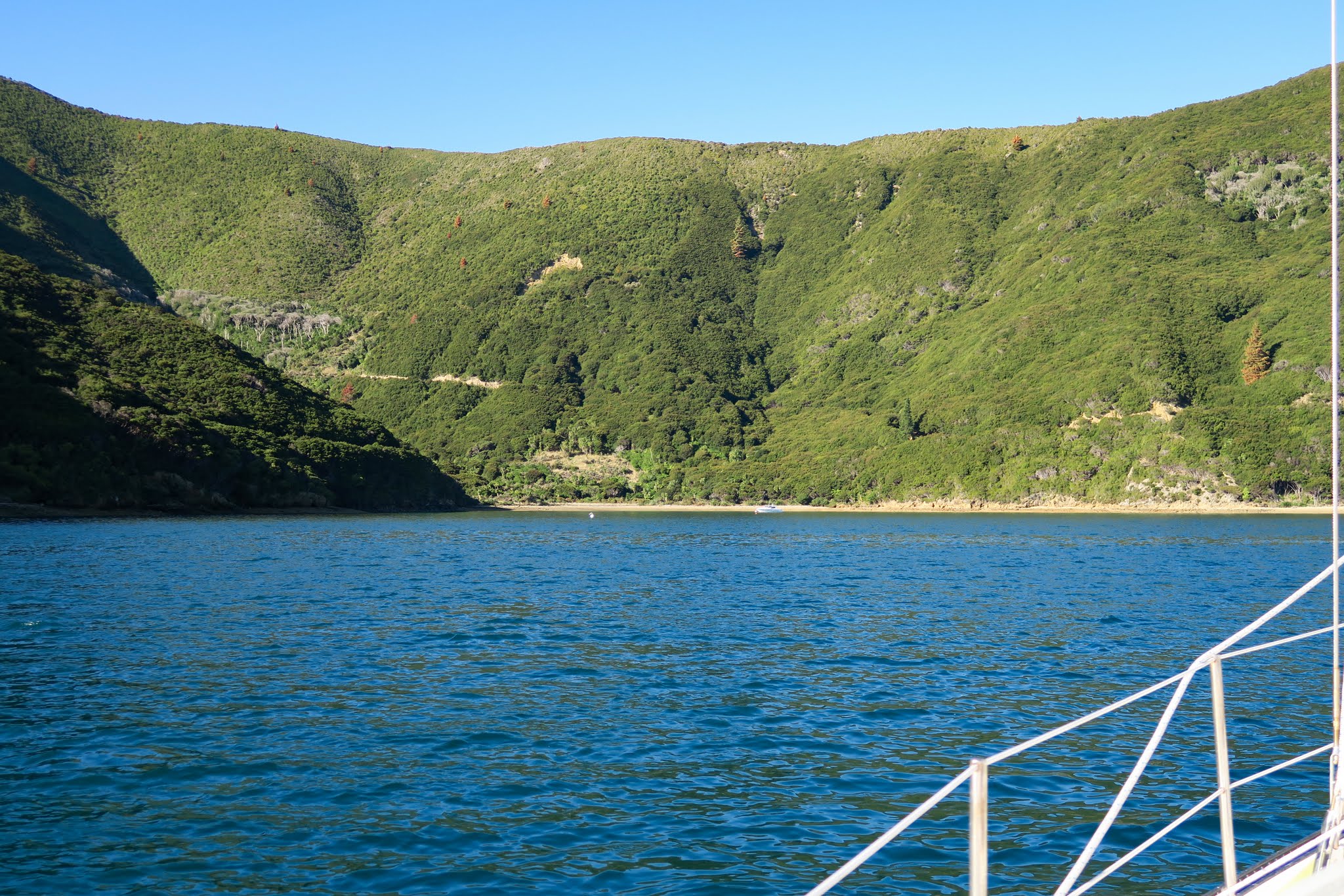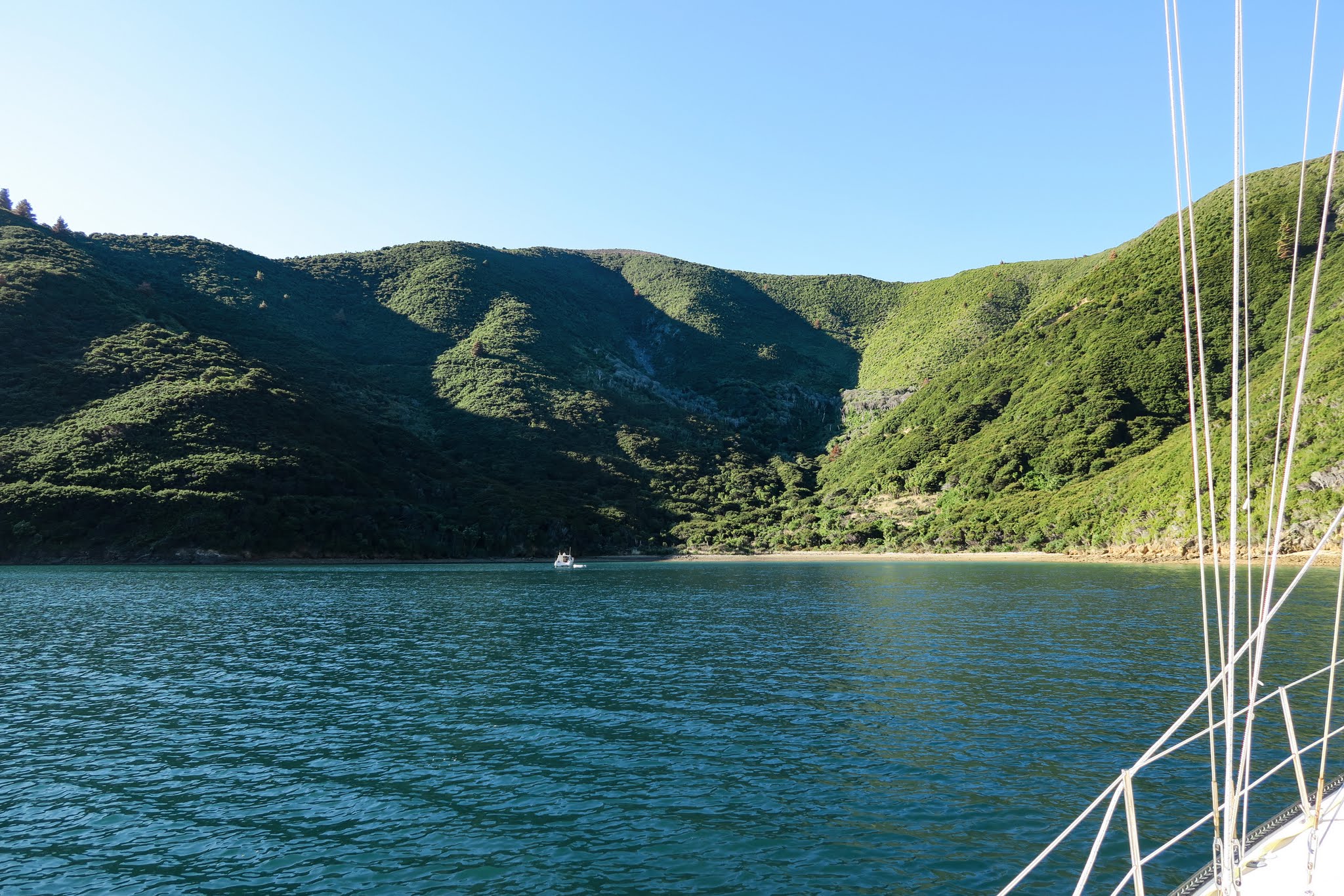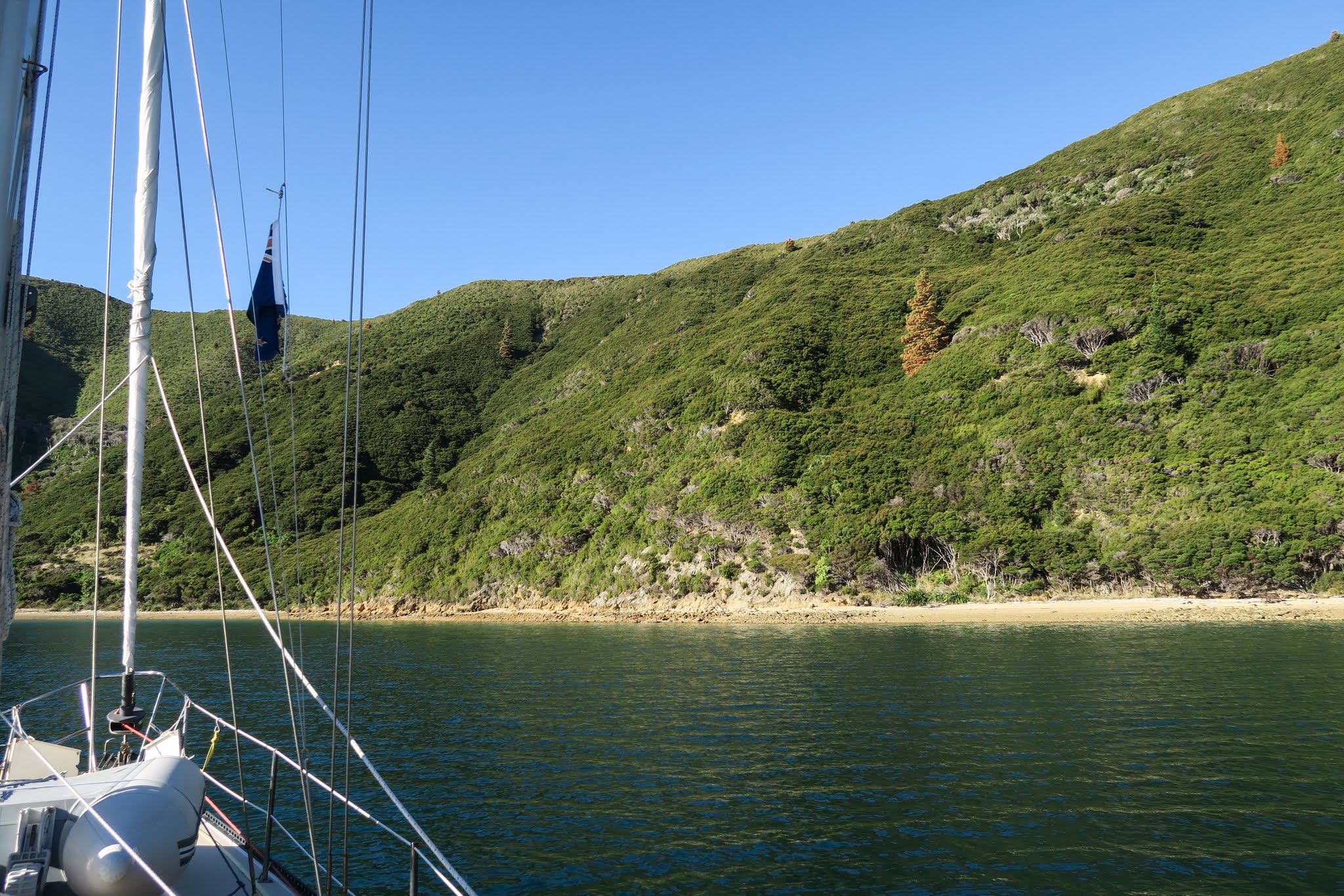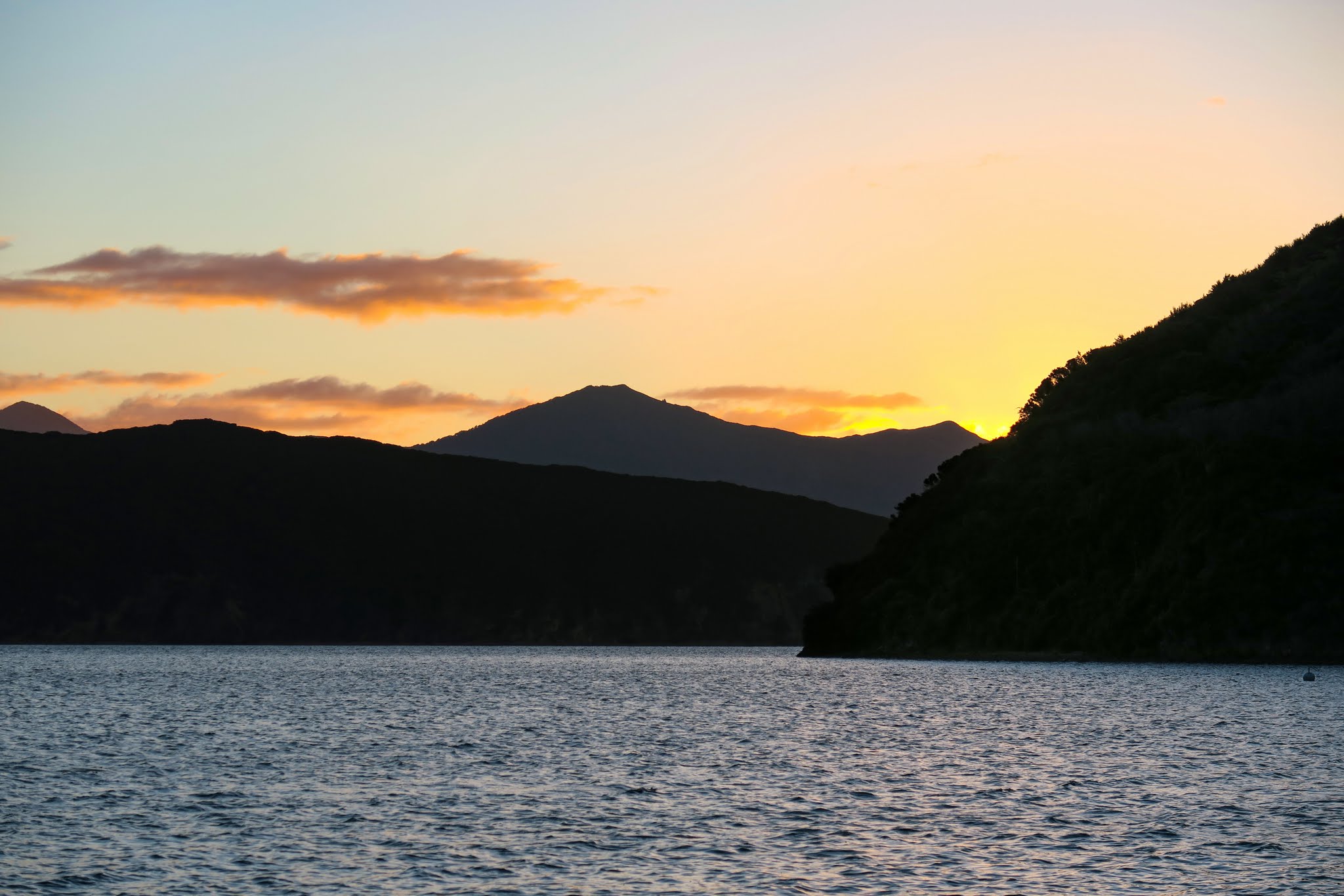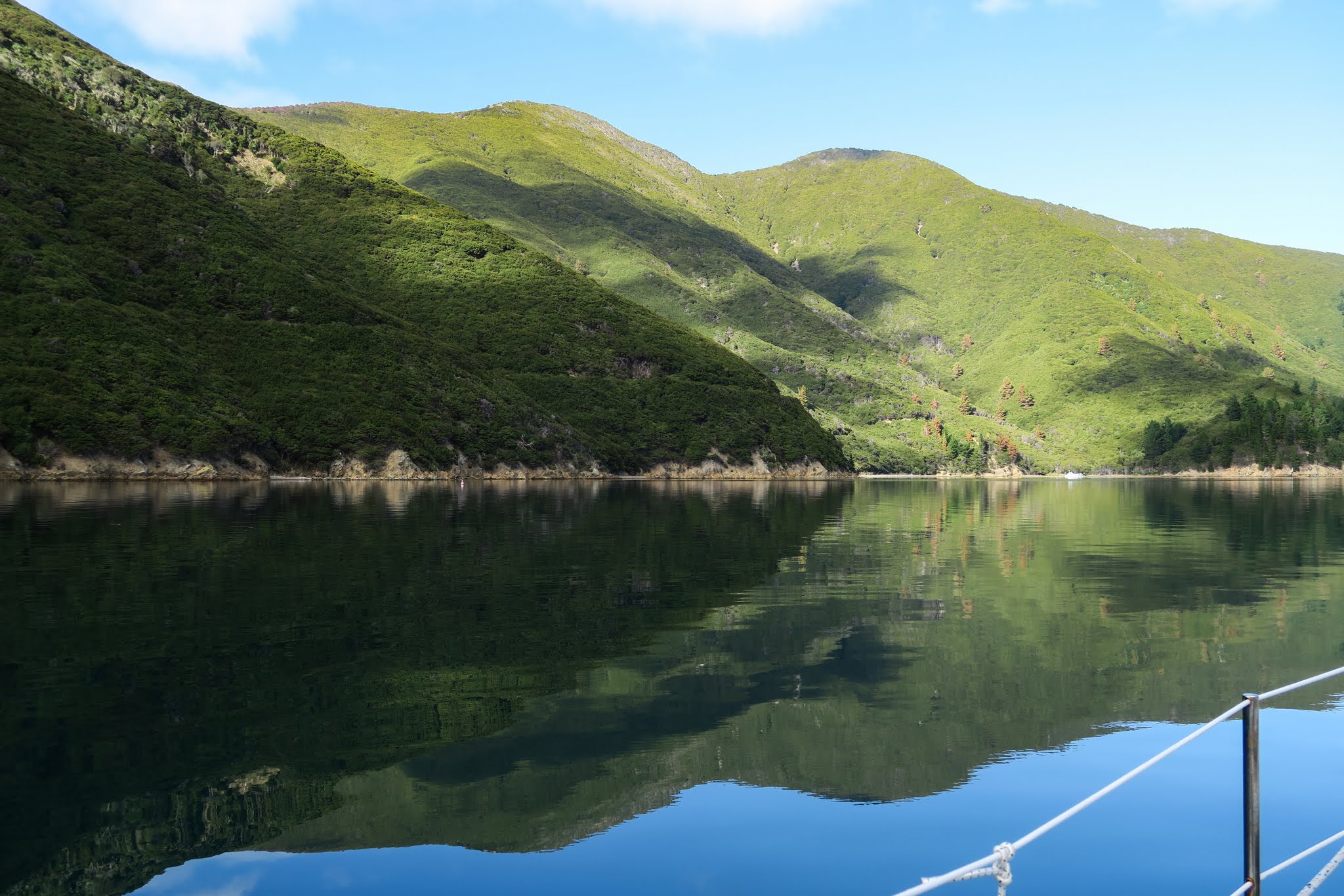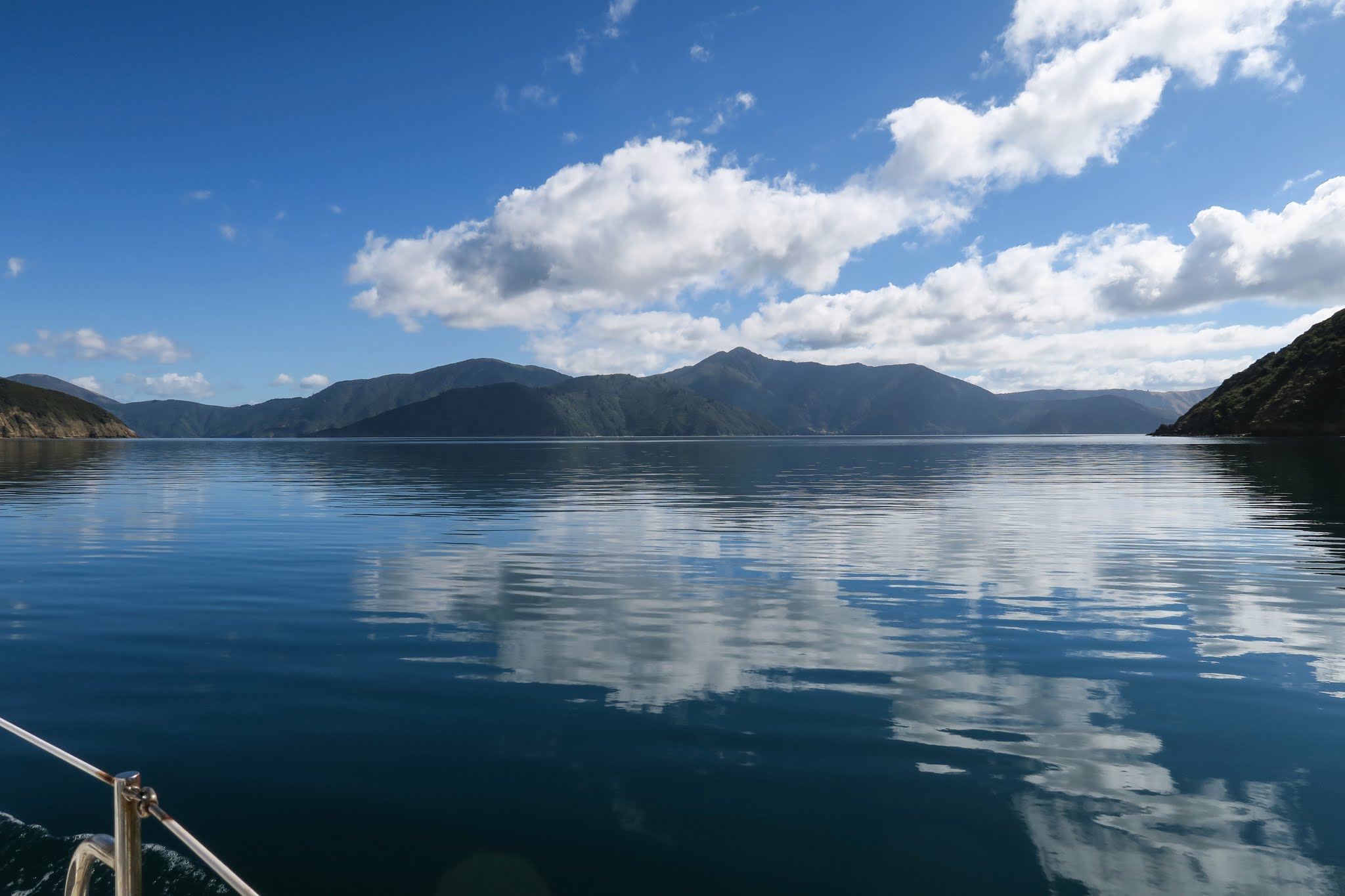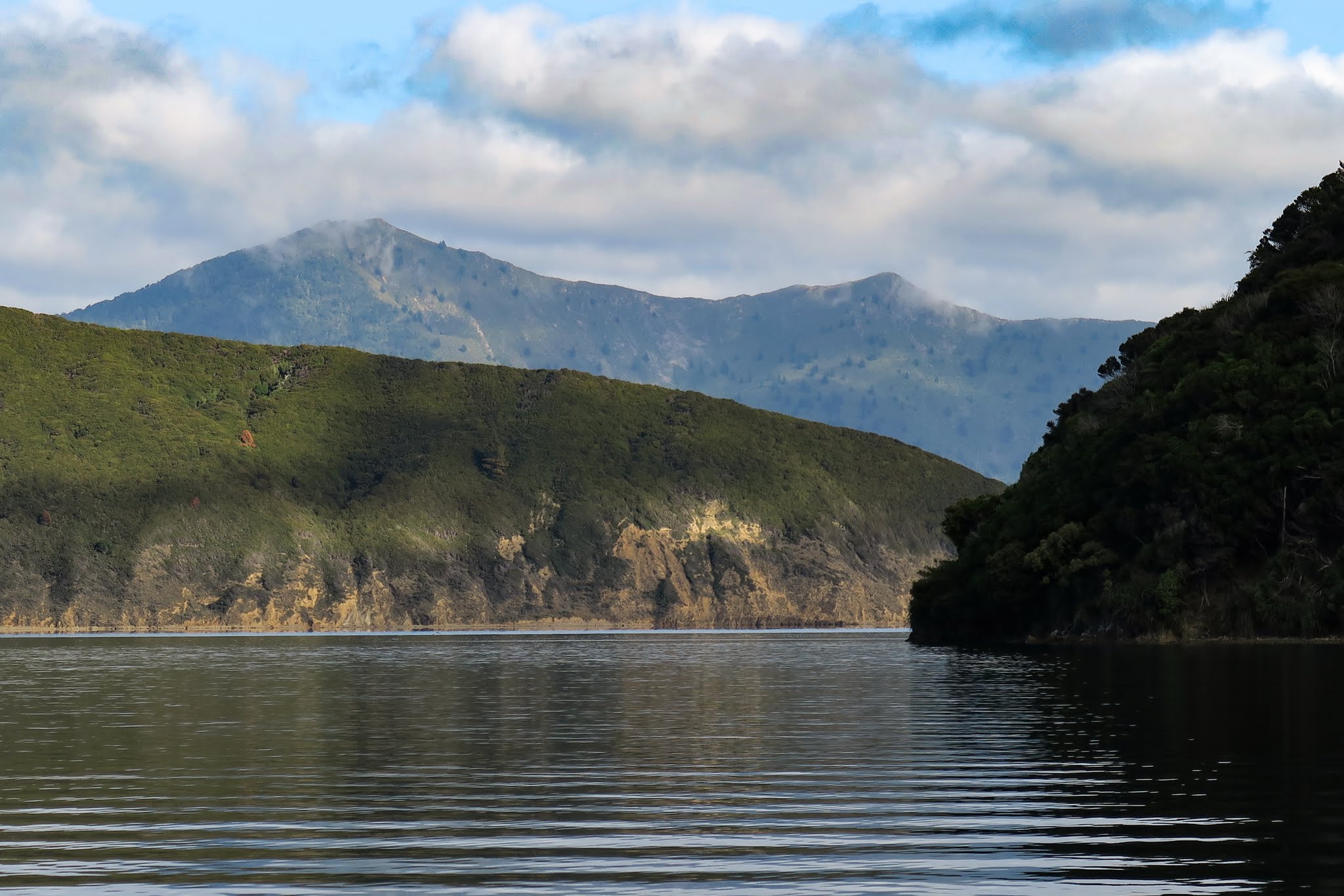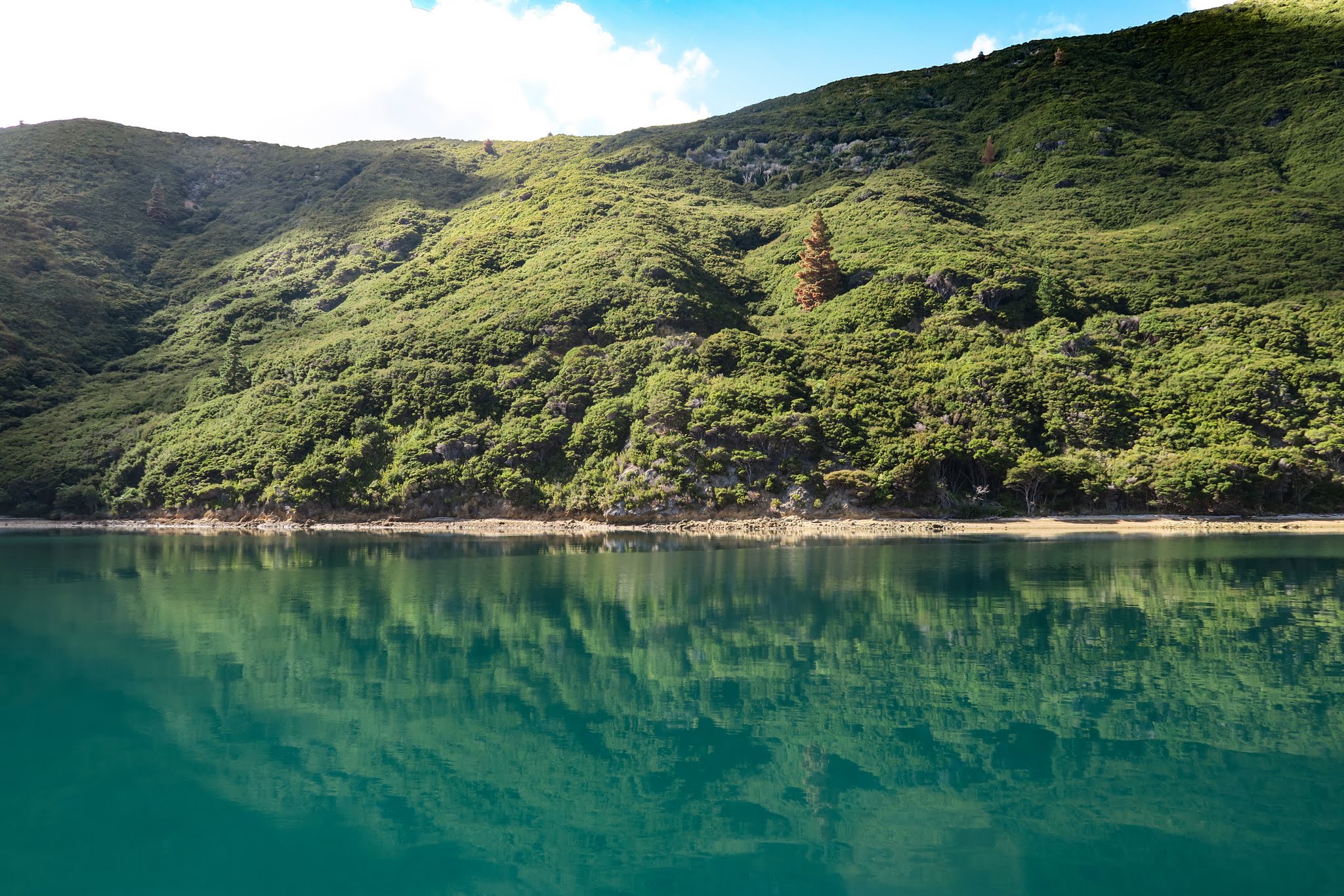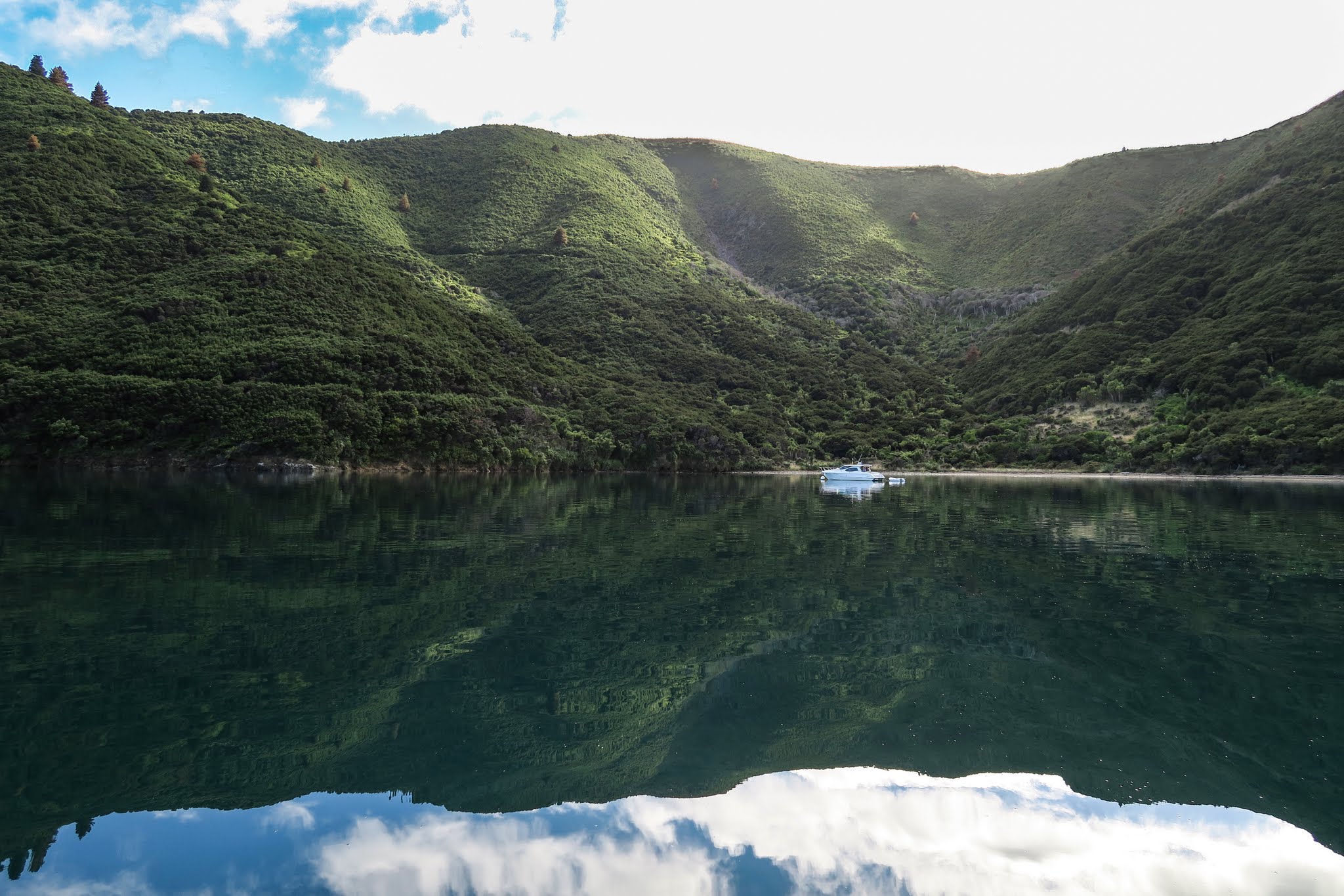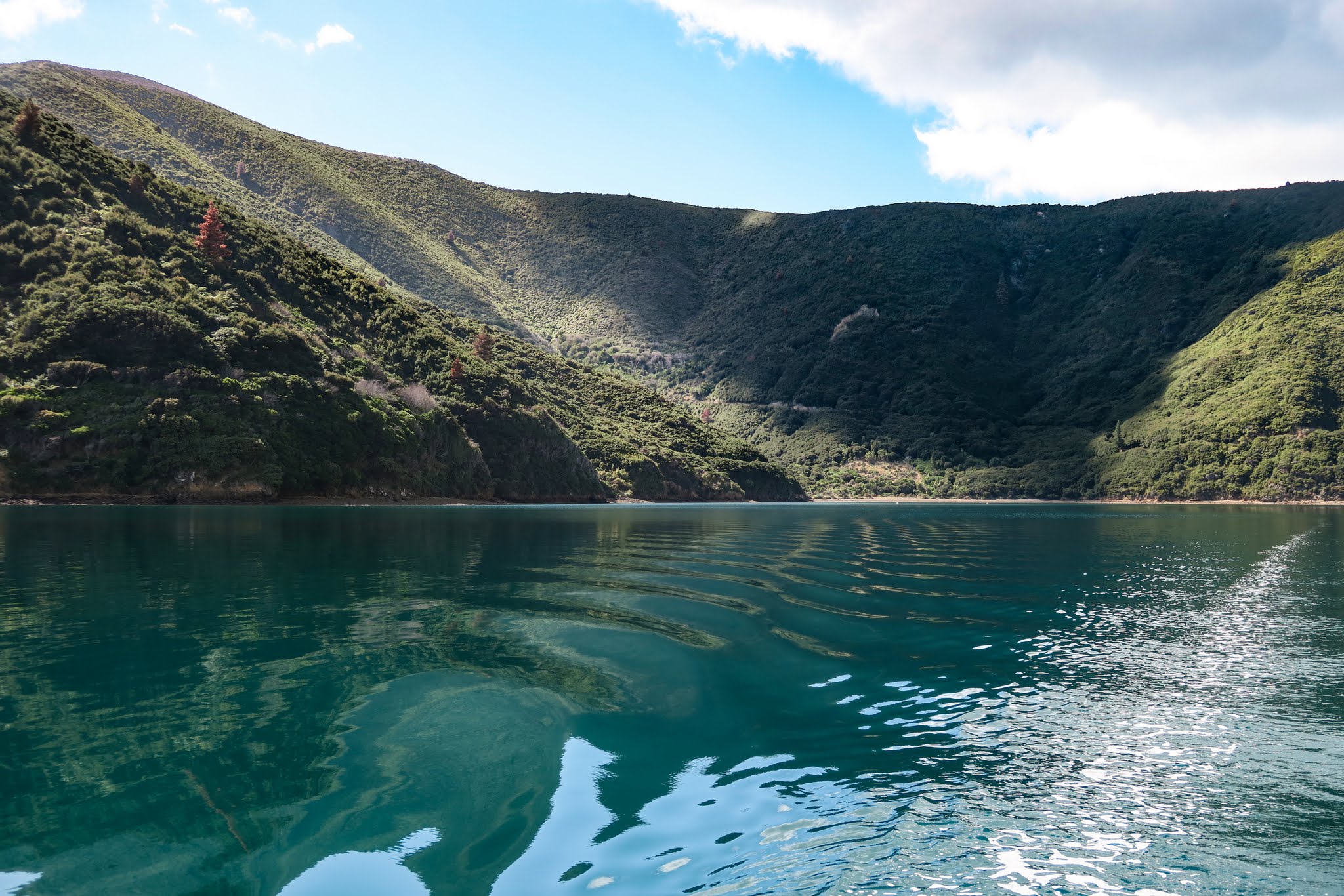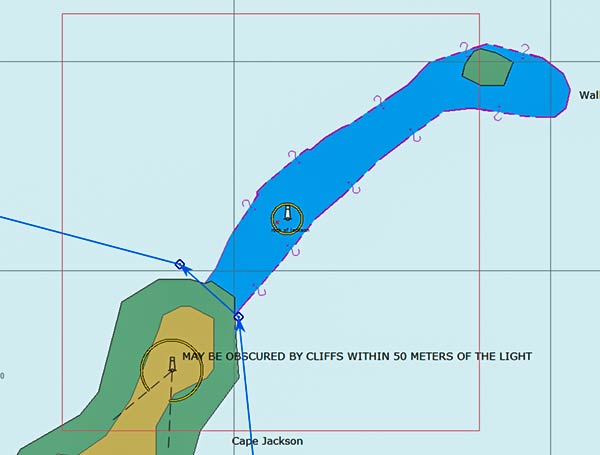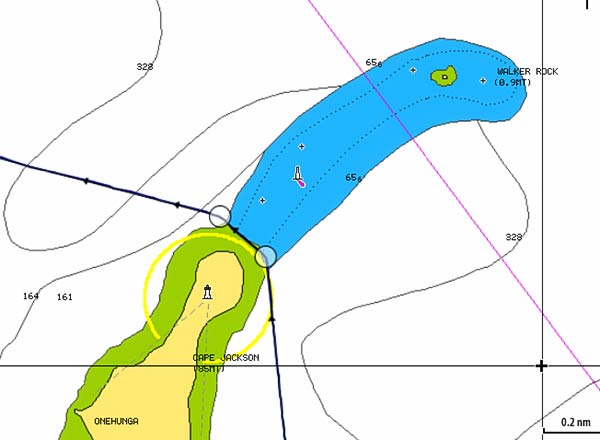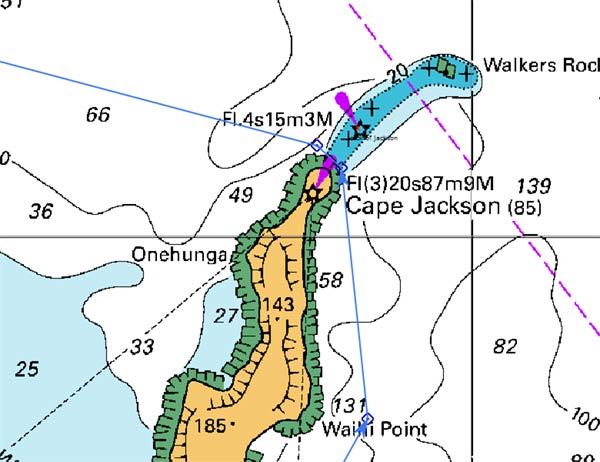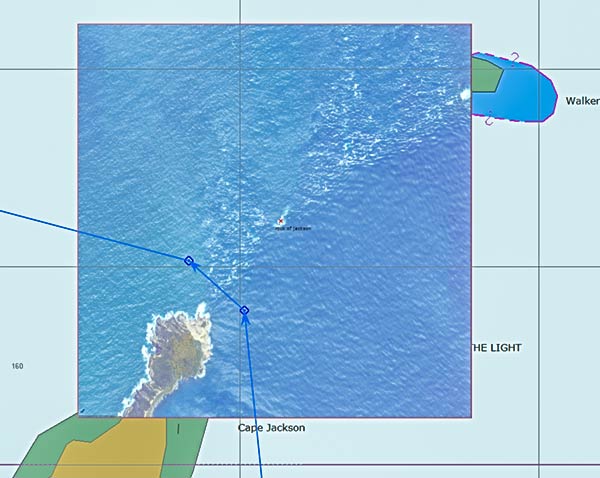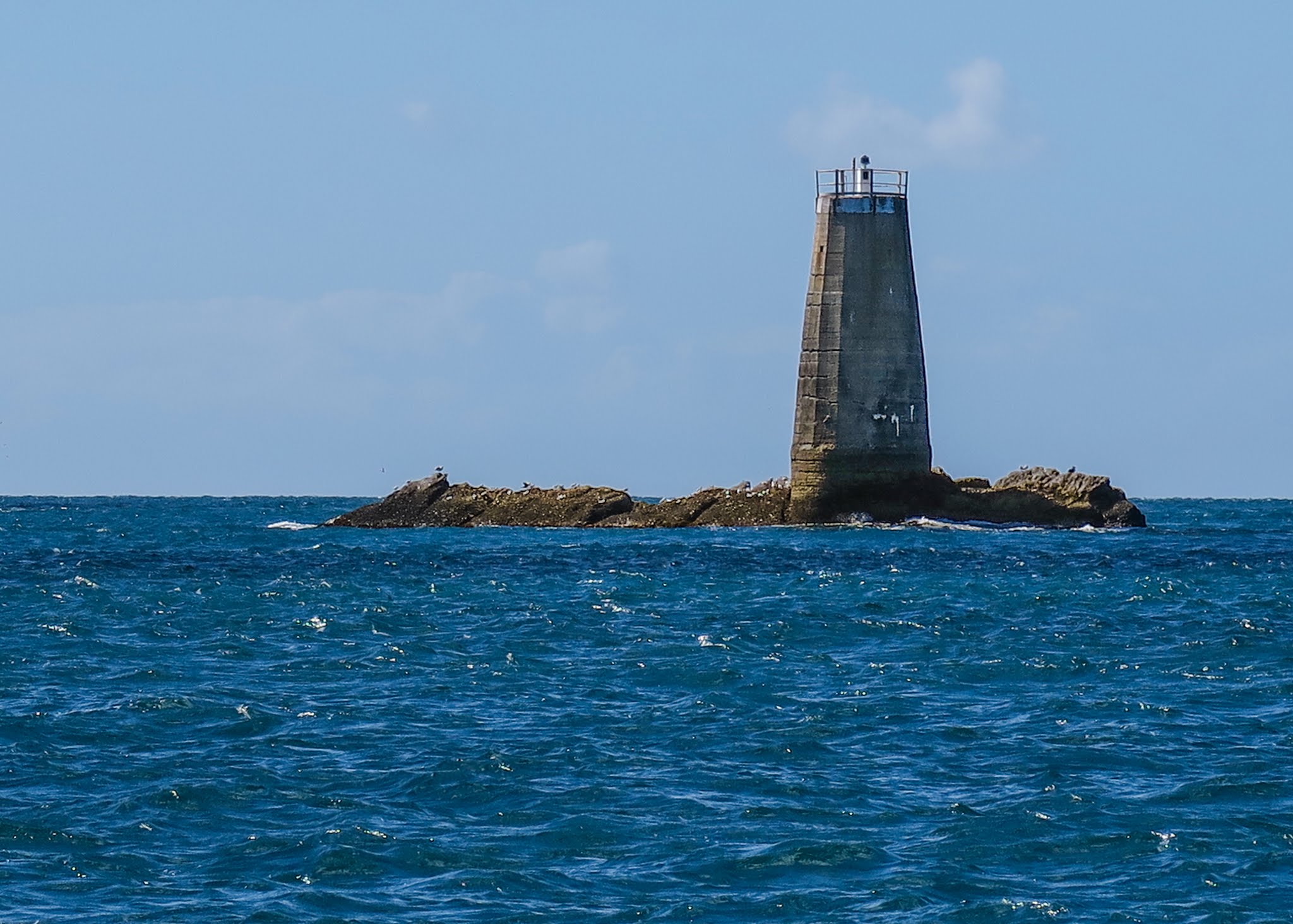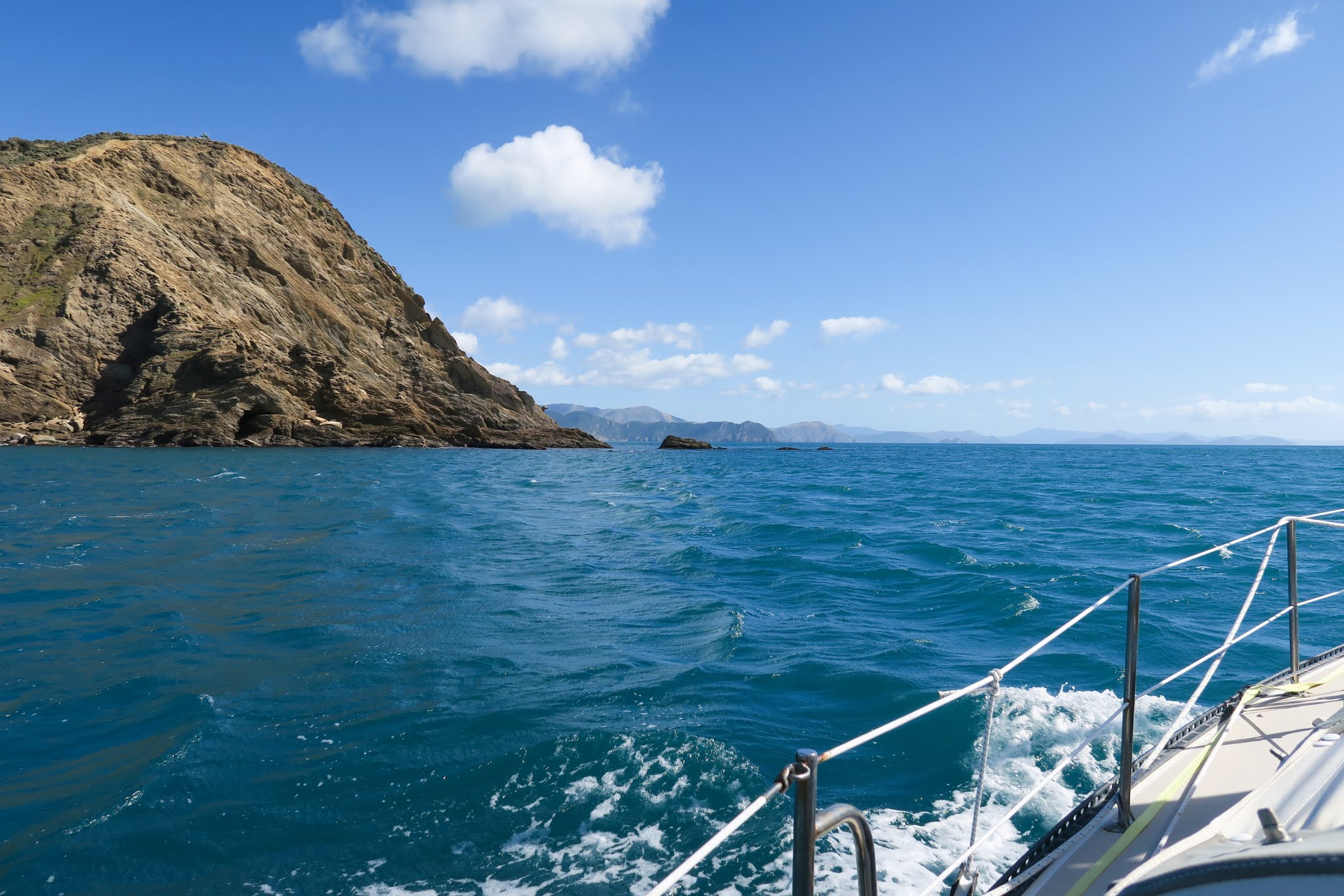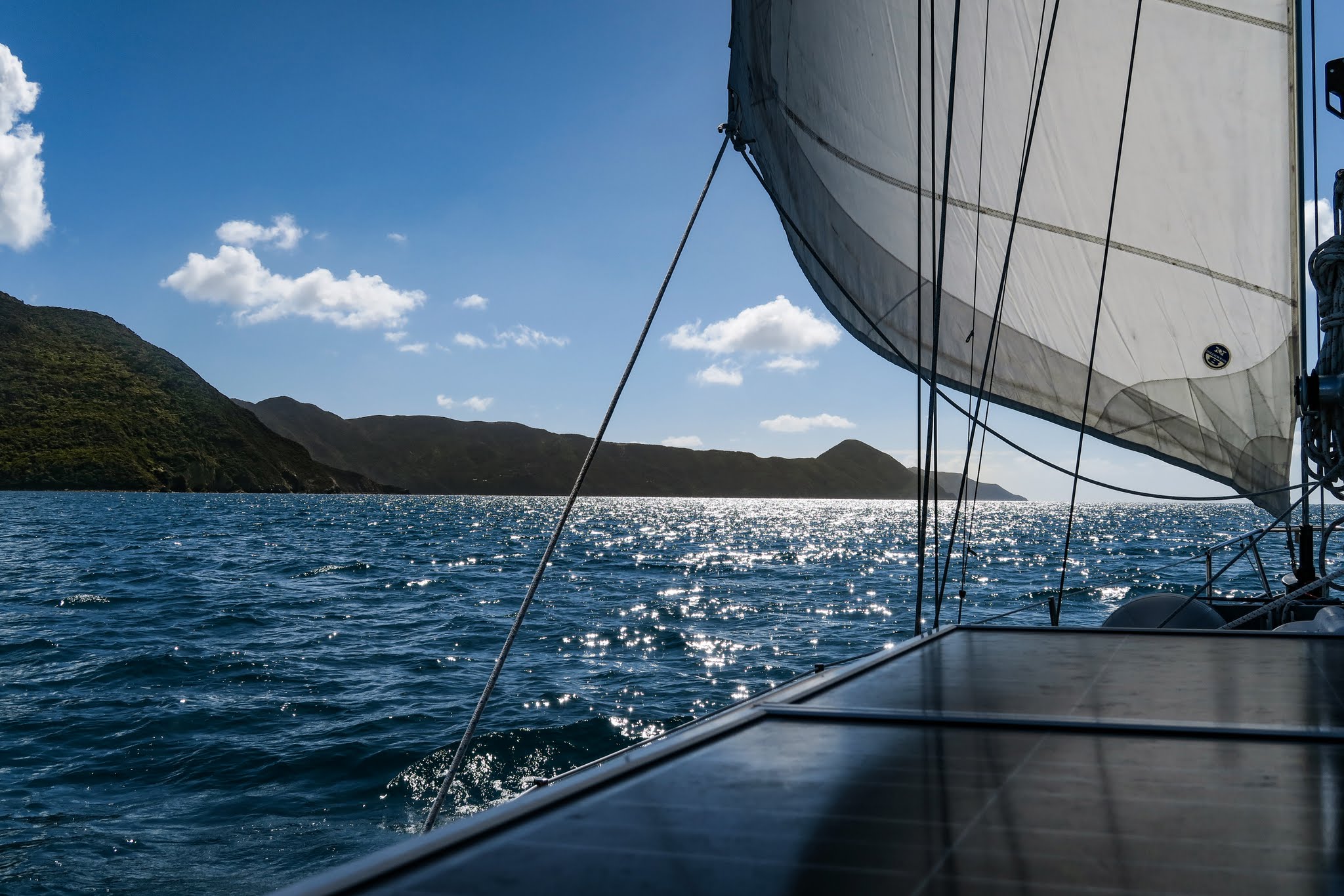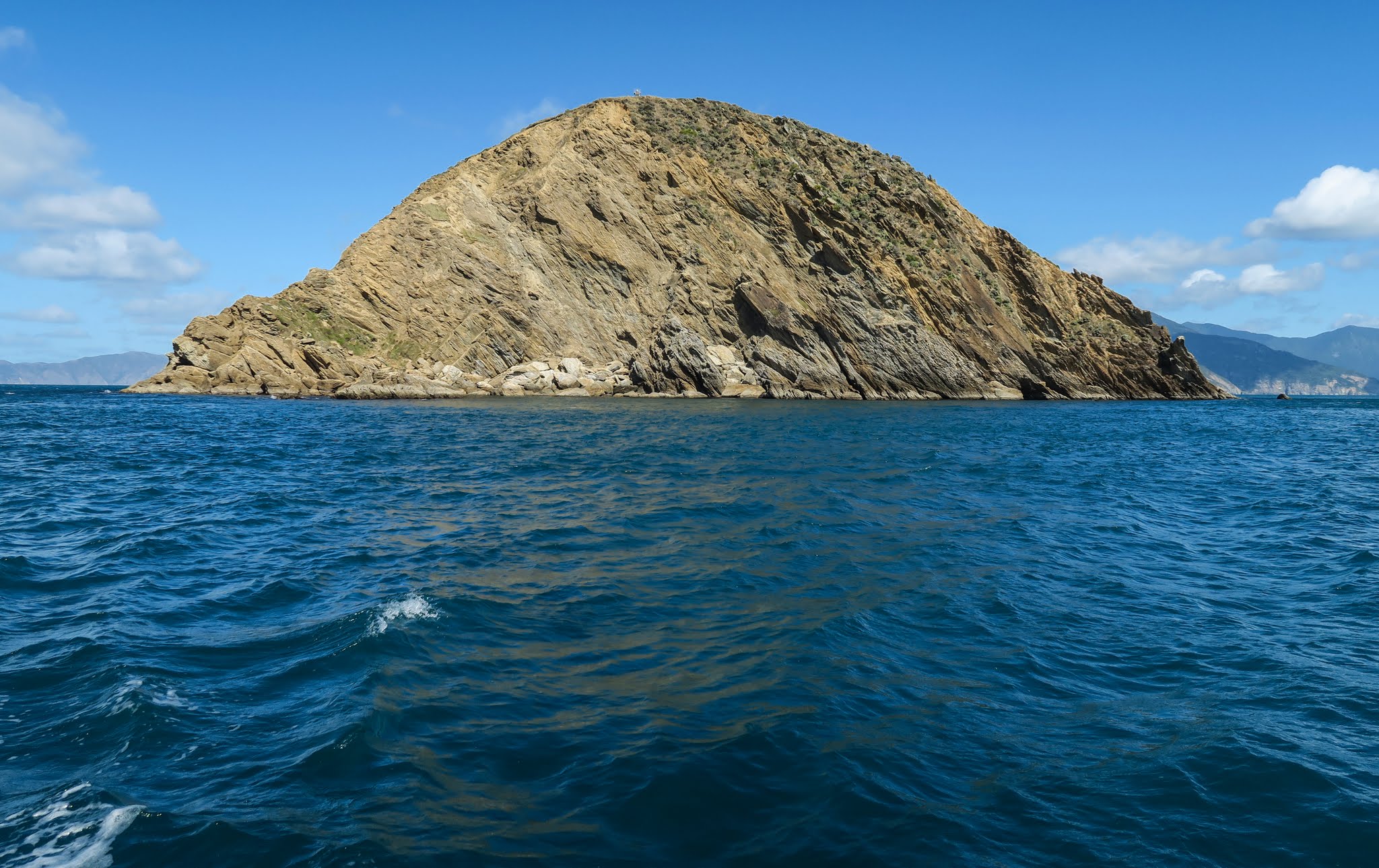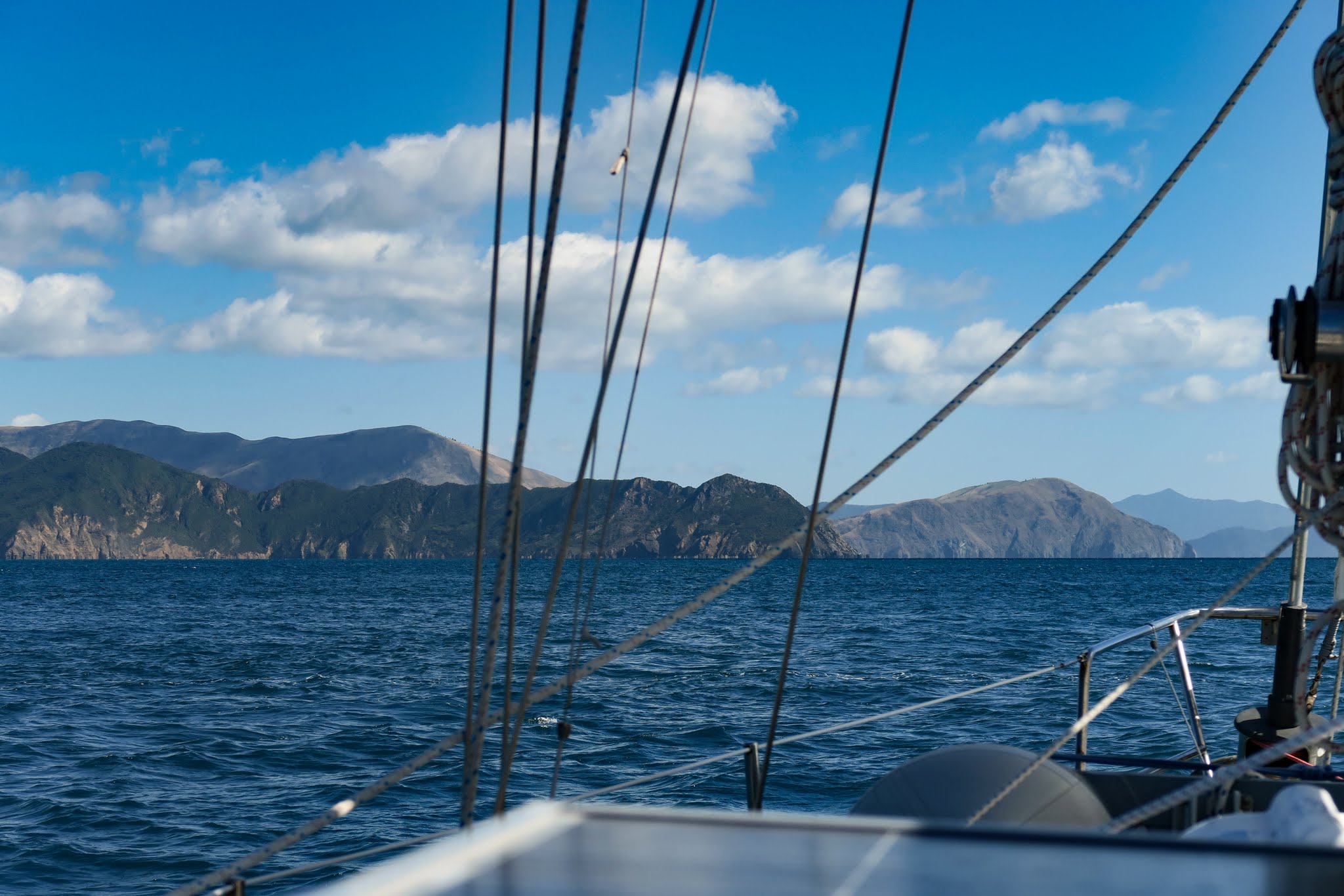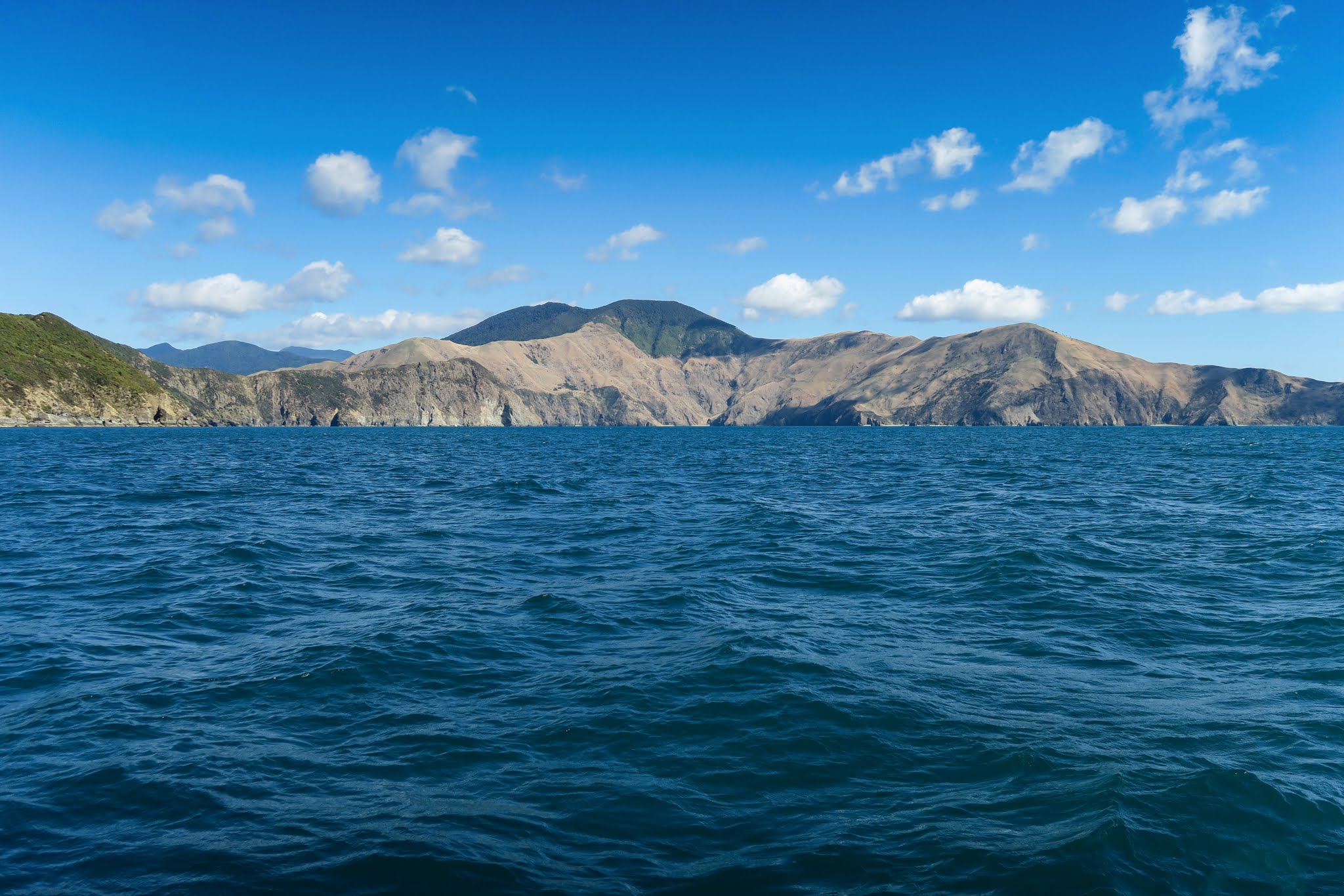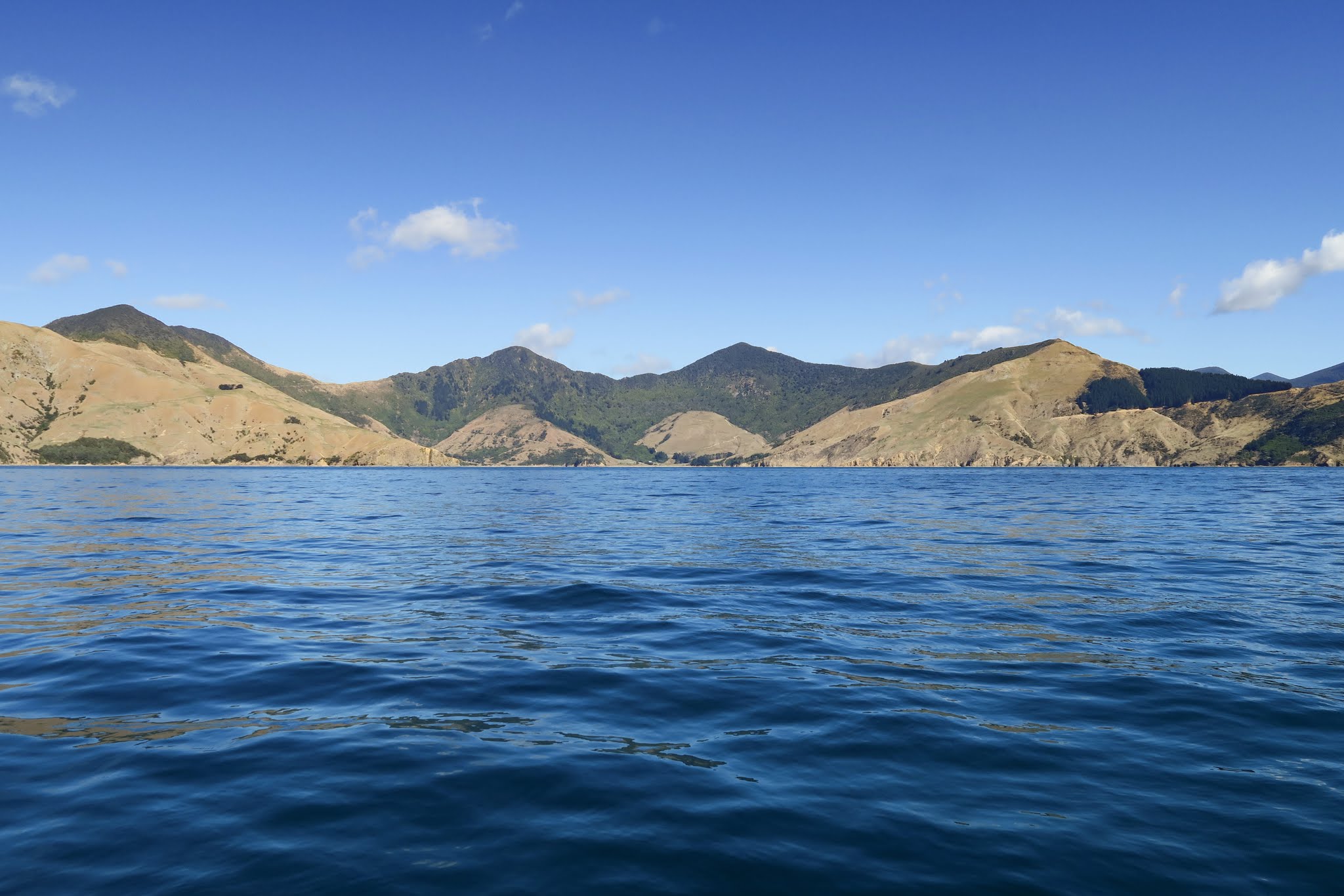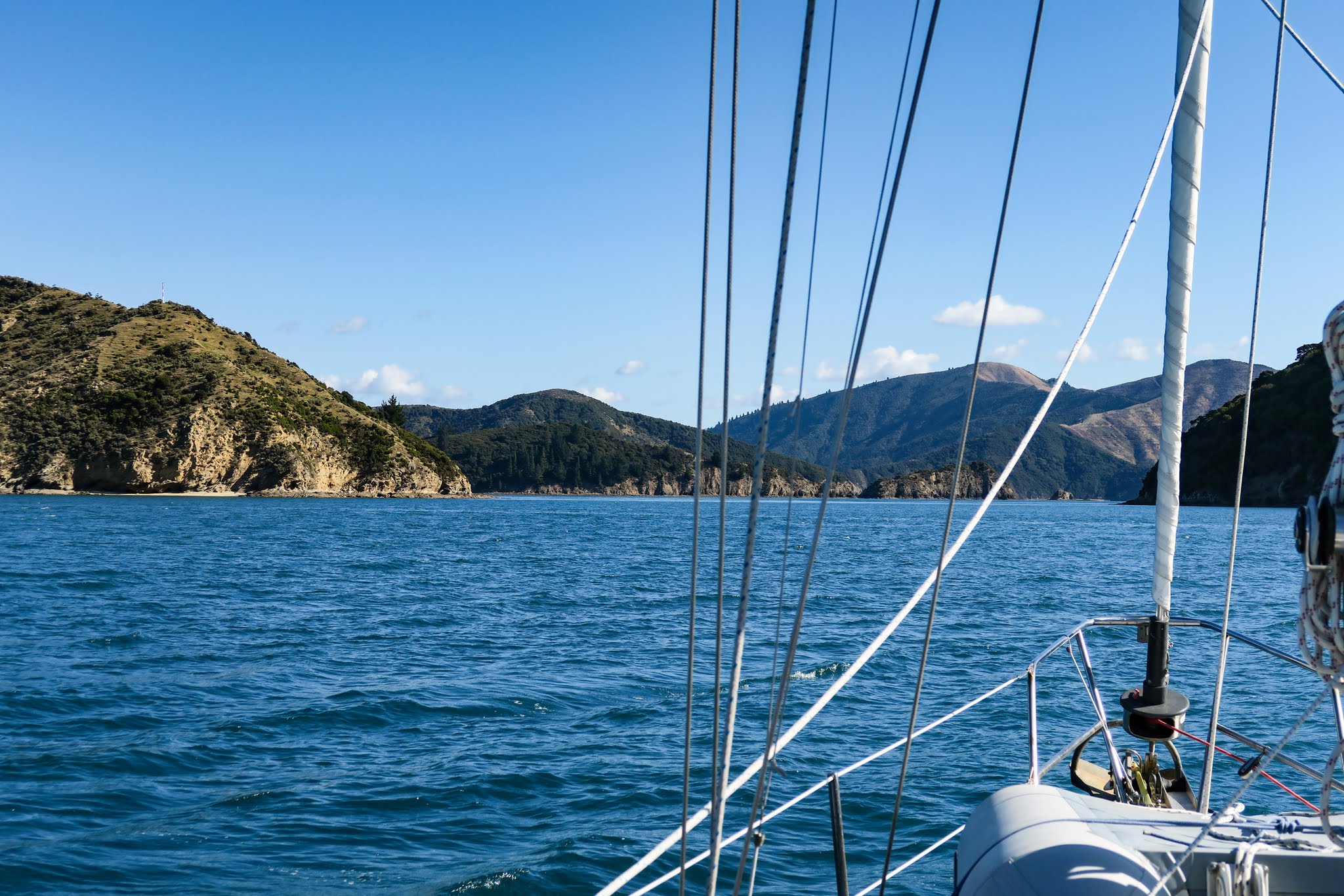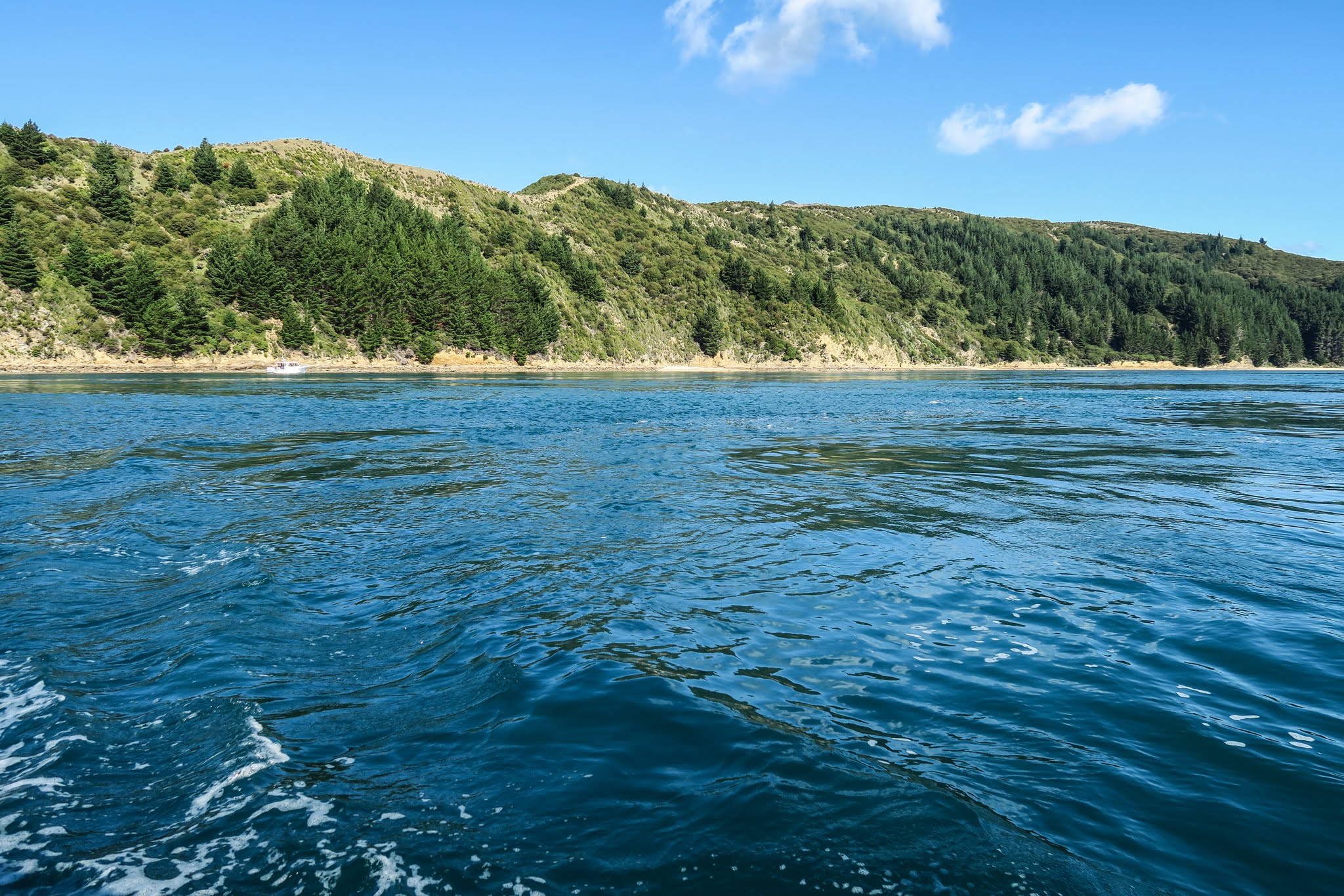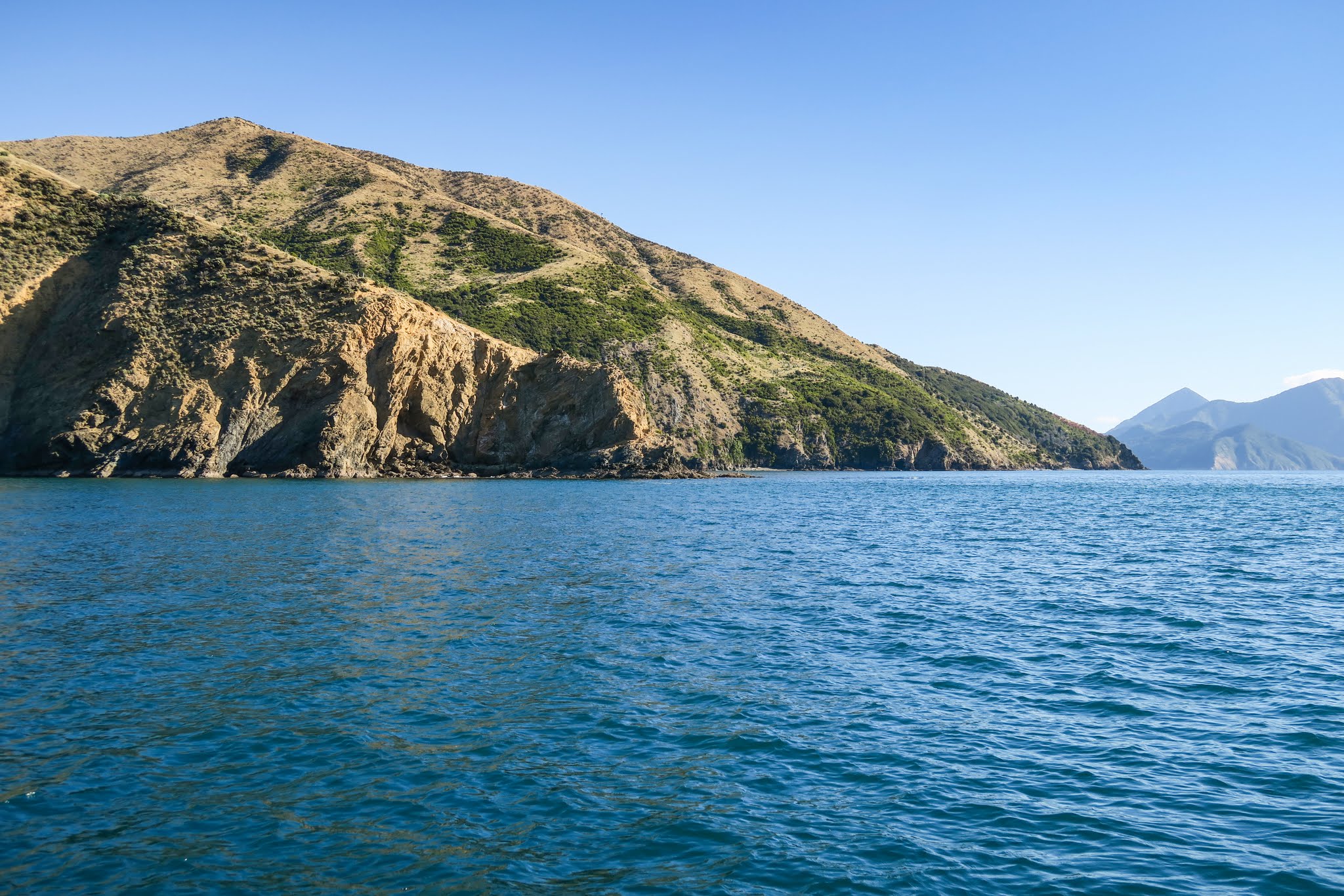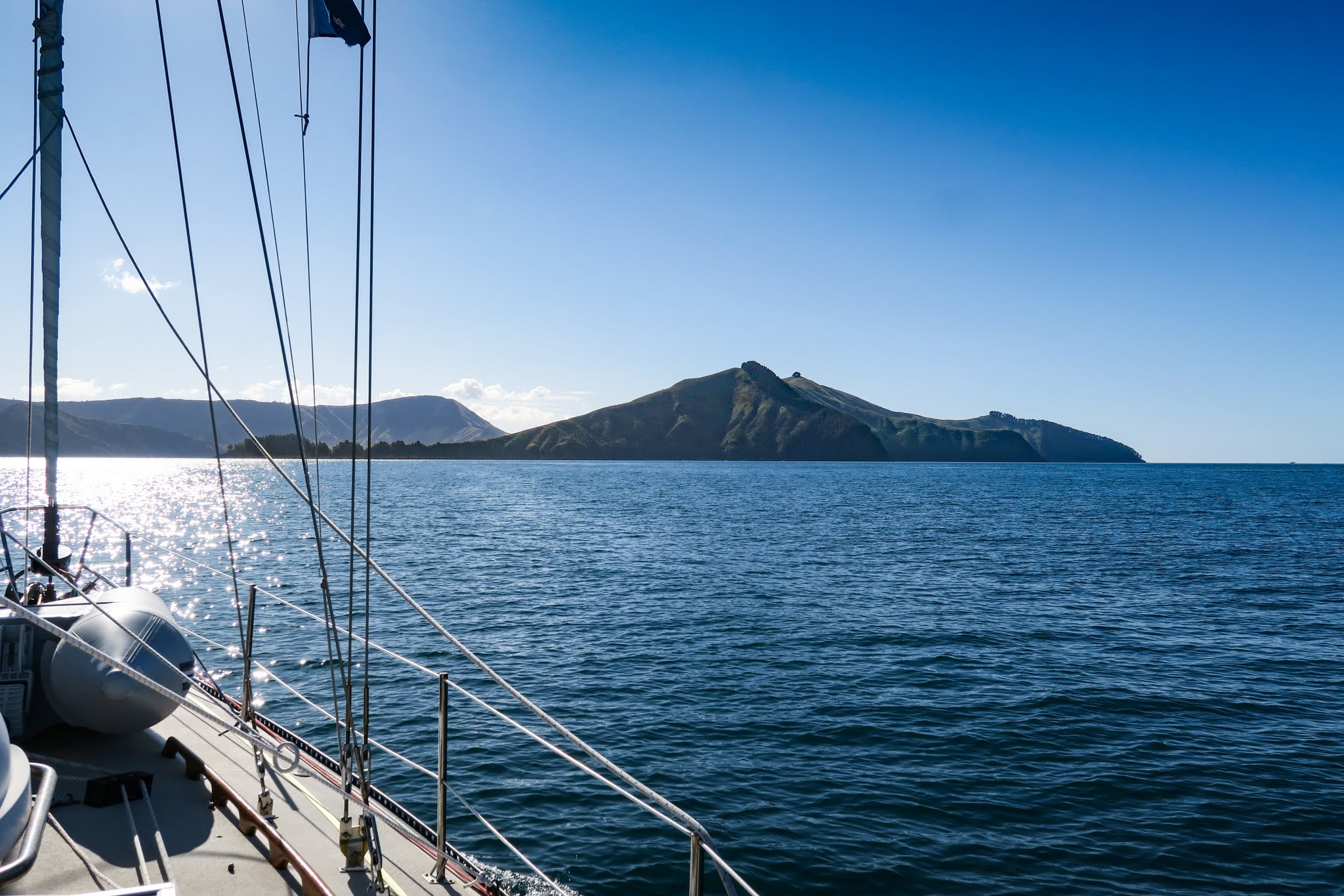April 6, 2016
I’d picked Hallam Cove because Keith Murray (author of New Zealand Cruising Guide, Central Area) labeled it “extremely attractive.” I’ve come to trust his judgement; so I was surprised to find Hallam Cove not so appealing. In fact, I wouldn’t even rate it “attractive.” It had a bizarre split personality: the east side was dry and grassy, while the west side was mostly pine farm in various stages of growth.
On top of that, the most likely anchorage was filled by mussel farms. This split personality appeared most bizarre in the neighborhood at the head of Hallam Cove (Cissy Bay). Half the houses were on dry grassy slopes, the other half in pine forest. None of it was very appealing, but in Keith Murray’s defense, it probably looked very different when he wrote his guidebook.

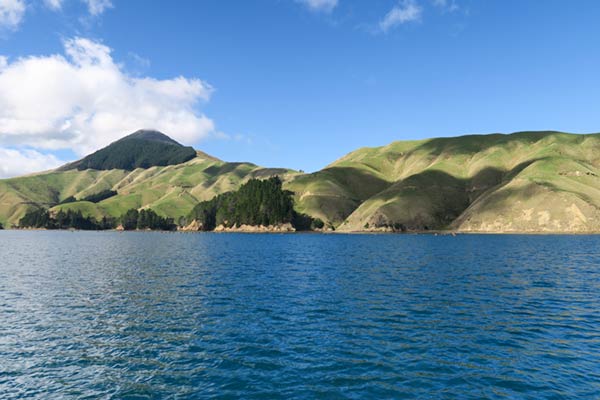

It was looking like Hallam Cove would be another disappointment. Then I spotted it: a small unnamed recess in a patch of natural New Zealand forest on the west side of Hallam Cove. It seemed awfully small, but our guidebook had marked as an anchorage so I suggested we head over and get a closer look. It can be hard to judge little places like this from afar, and something that looks mildly interesting can be quite stunning up close. The only way to find out for sure is to go right up in there. Thus poor Rich has had to motor into more uninteresting places than he’d care to but has to admit we’ve found some gems this way.
Anyway, we turned and headed for the indent. As we got closer, lush native forest began to fill our view, covering the hills down to the shoreline, and our little indent was starting to look big enough to anchor in. It looked like Keith Murray was going to be redeemed. –Cyndi
